50%



50%


For anyone who makes their holiday plans based largely on what the local food is, we have a treat for you this issue. Food and travel journalist Rashmi Narayan has written about 10 of the best flavours to discover around the world, from Isaan cuisine in Thailand to soul food in Louisiana and re-imagined traditional dishes in Lithuania. Turn to p14 to awaken your taste buds.
Plus, we’re taking a visit to Jersey in the Channel Islands with
Food and travel journalist Rashmi Narayan has written about 10 of the best flavours to discover around the world, from Isaan cuisine in Thailand to soul food in Louisiana
Wilson to explore the increasing number of historic properties that guests can stay in with Jersey Heritage (p26), and venturing beyond New York City with Lucy Shrimpton to contrast the city with the countryside that’s closer than we realise on p34. We’re also taking a look at the increasing efforts destinations across the States are making to be more accessible to all visitors, on p52, sharing some of our favourite community-led places to stay in South and Central America, on p48, and highlighting the excellent work our charity partners are doing, from p54.
There’s plenty here to inspire your next trip, so get stuck in!



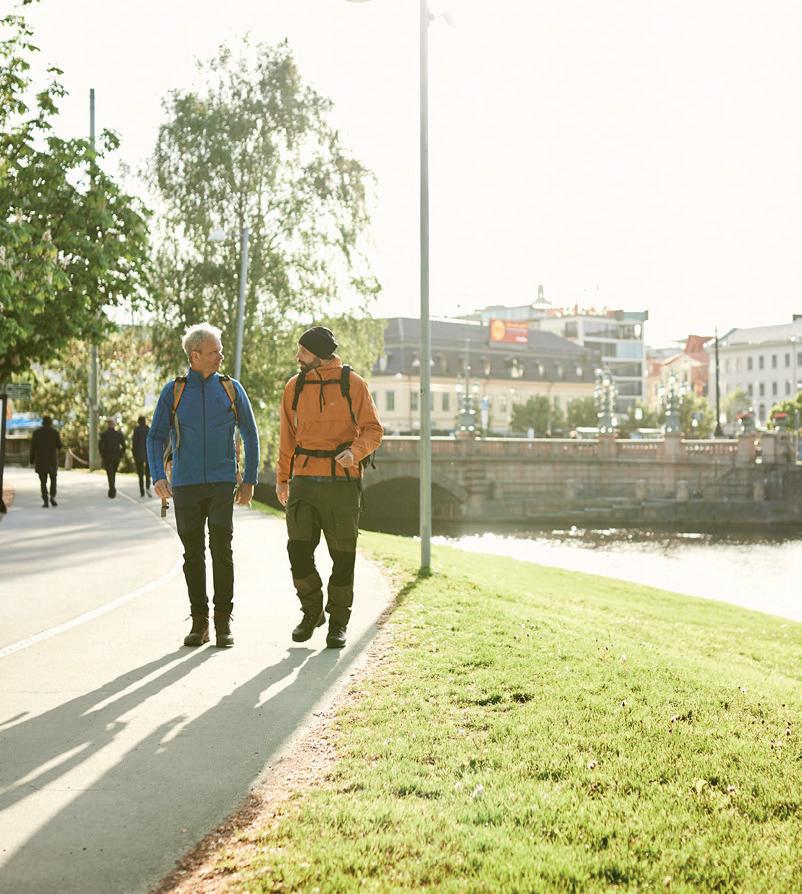
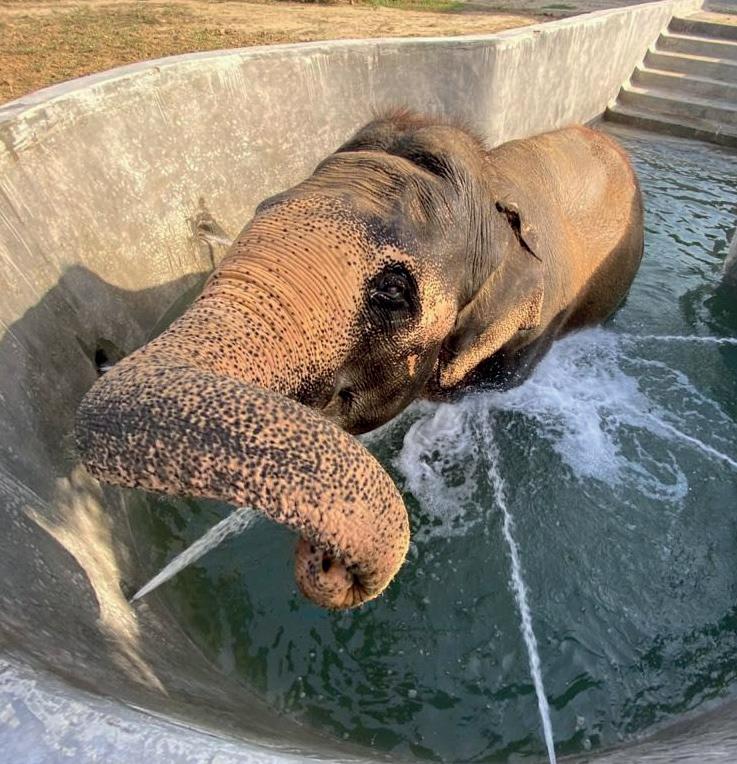
57

 Elaine
Elaine

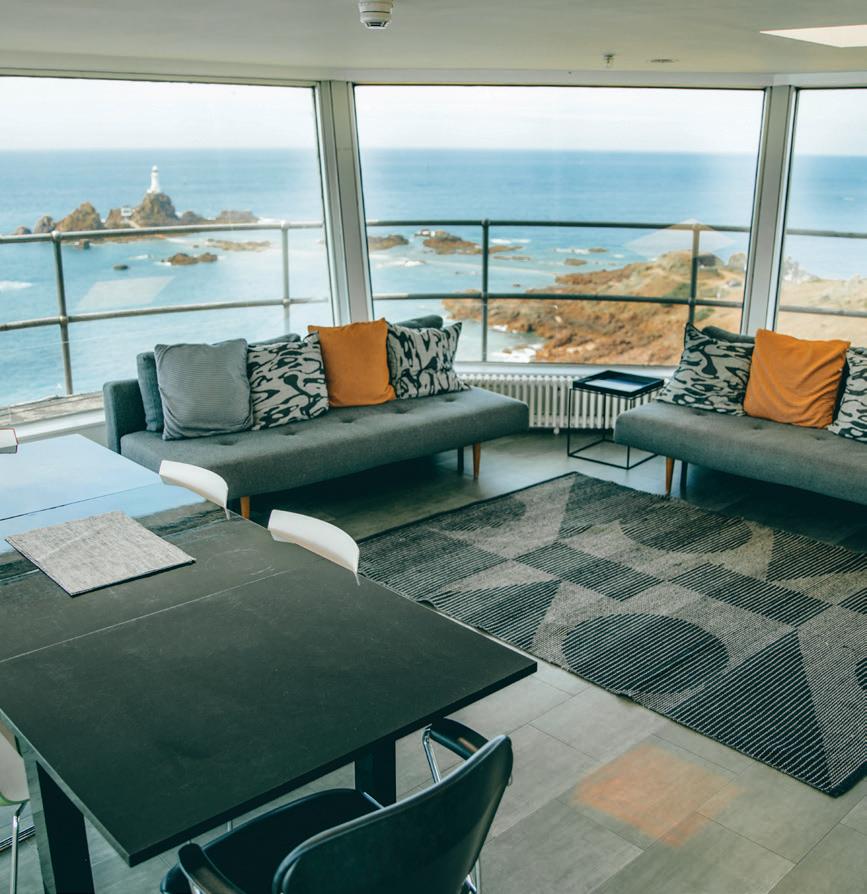



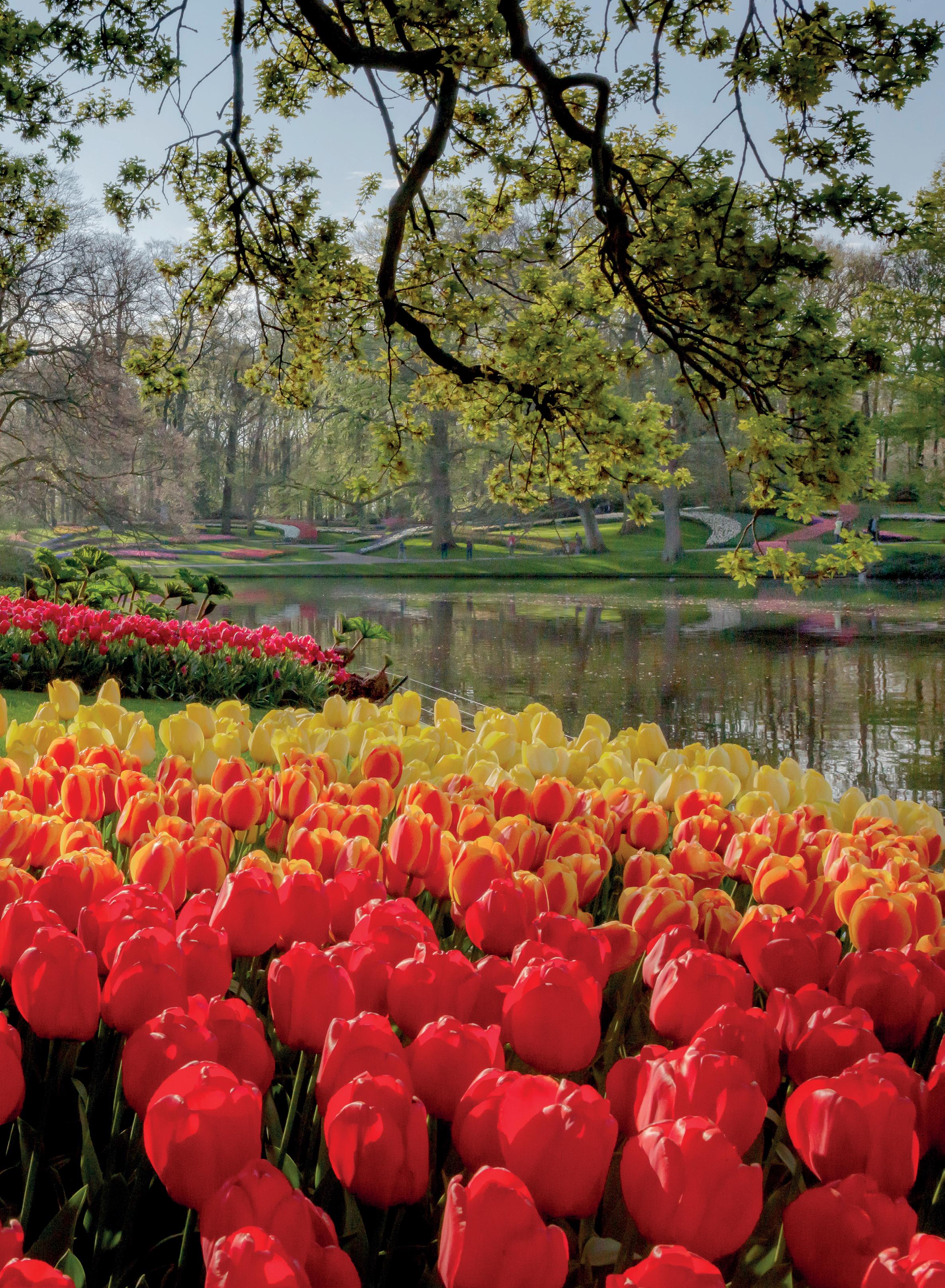
IN FULL BLOOM Keukenhof, the huge flower exhibition that springs into life each year in Holland, is celebrating its 75th anniversary this year. Originally created as a showcase for the local bulb growers in the Bollenstreek flower bulb region between Amsterdam and Rotterdam, Keukenhof now welcomes over 1.4 million visitors a year during the eight-week festival to view the 7 million tulips planted across its 32-acre monumental park. Planting the 800 varieties of bulbs takes around three months and maintaining the gardens is a full-time annual job for the team of 40 gardeners.
IN FULL BLOOM The Canary Islands celebrate Easter in a big way. Traditional processions and parades, such as this one taking place through the streets of San Isidro on Gran Canaria, take place across the islands during Semana Santa (Holy Week), each with its own unique flair. Witness streets filled with people in colourful costumes, lively music and captivating dances.



ACKNOWLEDGING THE PAST Seeking to honour the millions of people who endured the brutality of slavery in the USA, the Freedom Monument Sculpture Park on the banks of the Alabama River in Montgomery, Alabama has been built in response to the absence of authentic, historically significant places that explore the lives of enslaved people and the legacy of slavery. Recognising that the enslavement of 10 million Black people has shaped the legal, cultural, social and economic character of the United States in profound ways, the sculpture park sits alongside the newly opening Legacy Museum and the National Memorial for Peace and Justice.
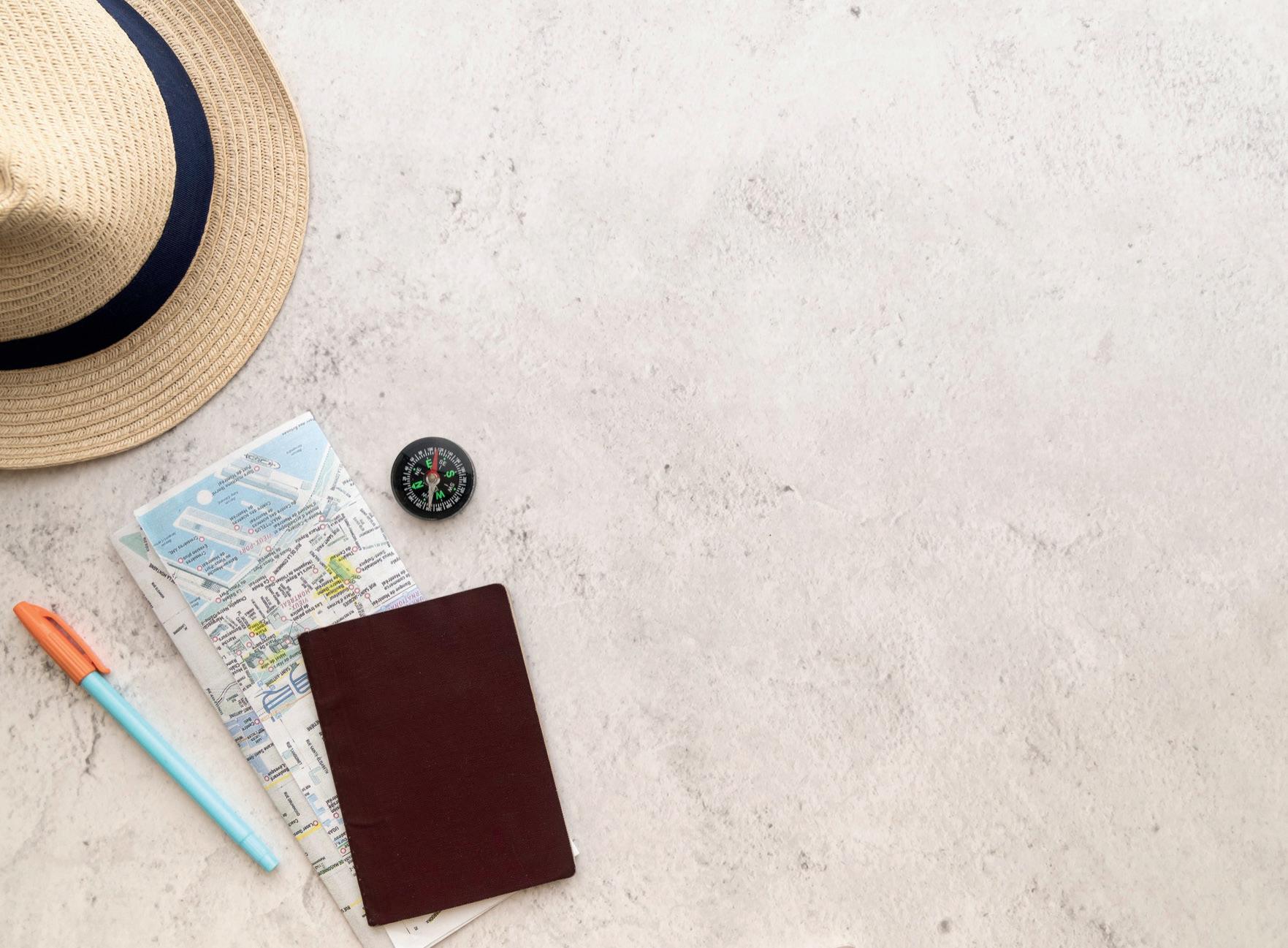

Discover
80 inspiring and sustainable no-fly travel itineraries
Avoid airport stress and see the best of Europe by train, boat or bicycle with these no-fly trips from Lonely Planet’s Flight-Free Europe book. You’ll find 80 detailed, stop-by-stop itineraries ranging in length from a long weekend to a month or more. Taking in cities, natural wonders, activities and some very delicious food, these trips take in the best of Europe in the most sustainable way possible.
Mixing practical details, such as guide prices, transfer times and connection information, with plenty of colour and description, this book is all you need to have a lower carbon footprint on your next trip. Giving you the chance to explore the joy of slow, more climate-friendly travel, FlightFree Europe encourages deeper, more meaningful journeys and includes detailed route maps, beautiful imagery and useful suggestions. Thanks to Eurostar connections and the extensive and ever-growing network of high-speed trains, which
rival planes for end-to-end journey times, exploring the continent has never been easier.
Holiday highlights to try include a beer pilgrimage to Belgium, taking in Brussels, Antwerp and Bruges, a gastronomy tour of northern Italy, travelling from Paris to Bologna, Modena, Parma, Milan, Turin and Genoa, and hiking into the wild heart of Scotland, via Glasgow, Corrour, Loch Erica, Dalwhinnie and Edinburgh.
Make the most of Europe’s complementary intercity, regional and local train services, interspersed with ferry, bus, cycling and hiking trails, and it couldn’t be easier to have wonderful low-carbon adventures exploring the continent.
Lonely Planet’s Flight-Free Europe is out now in hardback for £19.99, available where all good books are sold.

We’ve got 10 copies of Lonely Planet’s Flight-Free Europe to give away – to be in with a chance of winning one, visit lonely-planetcharitable.travel/ to enter our competition
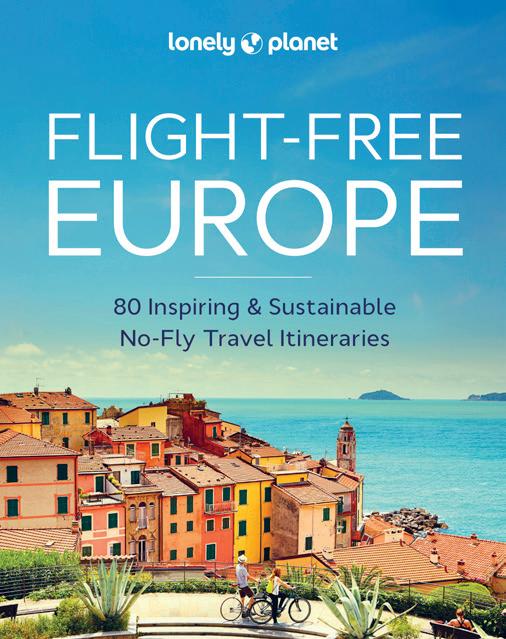
HEDGEHOGS ARE MAKING A TENTATIVE URBAN UK COMEBACK, SAYS A SURVEY BY GARDENERS’
WORLD, WHICH REPORTS SIGHTINGS
UP 2% IN 2023, COMPARED TO 2022
US REFORESTATION
A century of planting trees across much of the eastern US has had a noticeable effect on rising temperatures, scientists have found. Across large parts of the eastern US, temperatures have flatlined or even cooled, despite the unmistakeable broader warming trend elsewhere. Following European settlement in America there was a surge in deforestation, but this began to reverse from around the 1920s as people moved to the cities. Since then, enough trees to cover an area the size of England have been planted.
Greece has become the first Christian Orthodox-majority country to legalise same-sex marriage, following a vote in parliament that passed with a majority of 100. It also means that same-sex couples will be legally allowed to adopt children. “People who have been invisible will finally be visible around us, and with them, many children will finally find their rightful place,” said Prime Minister Kyriskos Mitsotakis. “The reform makes the lives of several of our fellow citizens better, without taking away anything from the lives of the many.”

From 12 February this year, all planning permissions granted in England have to deliver at least a 10% biodiversity net gain, in a move that requires all new developments to boost nature, not damage it. The new law is a world first and means that if habitats are destroyed for homes, roads or other developments, equivalent habitats that deliver a 10% biodiversity gain must be recreated on-site or elsewhere. The Royal Institute of British Architects said it meant architects would now have to “design with nature”, representing a major change. The conservation charity The Wildlife Trusts has been contributing to the evolution of the Biodiversity Net Gain principle for many years, and welcomed the legislation, but said it lacked ambition. “A gain of 10% will at best hold the tide against nature loss,” said its planning and development manager Rachel Hackett. “If we want to secure real recovery for nature, we need to see at least 20% gain.”
 LEEANN AND BRENDA MUNDRABY
LEEANN AND BRENDA MUNDRABY
Three young sisters, Joanne, Leeann and Brenda Mundraby, from the Mandingalbay Yidinji people in Tropical North Queensland are leading the way in connecting visitors to their authentic and ancient culture. All three are new to tourism yet have built their confidence to share their culture as Indigenous tour guides. Working with the Indigenous owned and operated Mandingalbay Authentic Indigenous Tours in Cairns, the trio are playing a crucial role in promoting sustainable, responsible and communitybased tourism on their traditional lands.
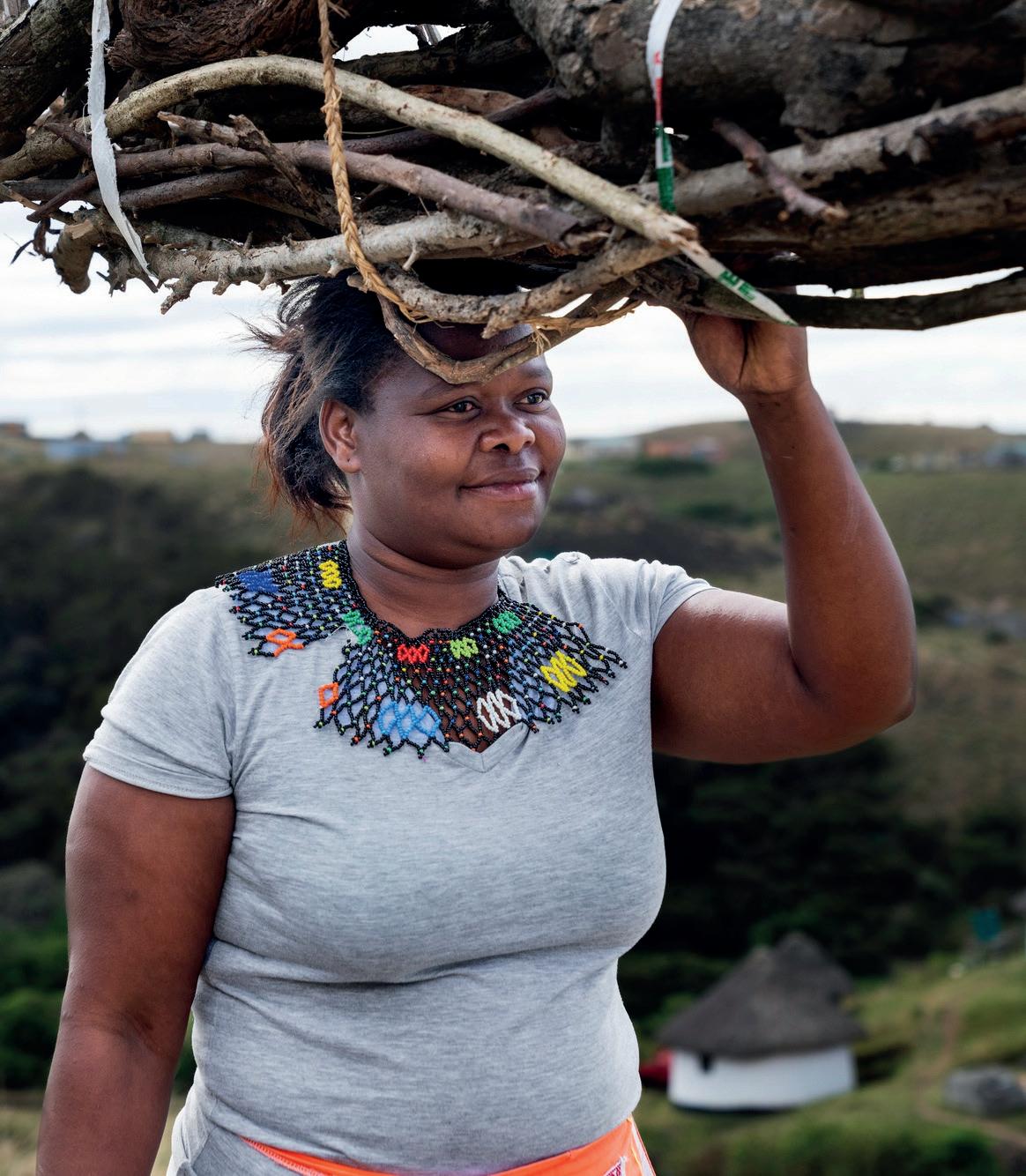
Smart building
A community of homes in Florida has withstood not one but two recent hurricanes, when all other structures were heavily damaged. As well as withstanding damage, the homes at Hunter’s Point also generate more energy than they consume.
Proving you can’t buy happiness, new scientific research has shown that people living in remote Indigenous communities are as happy as those in wealthy developed countries despite having ‘very little money’.
Researchers interviewed 2,966 people in 19 Indigenous and local communities across the world and found that they were as happy – if not happier – as the average person in highincome western countries.





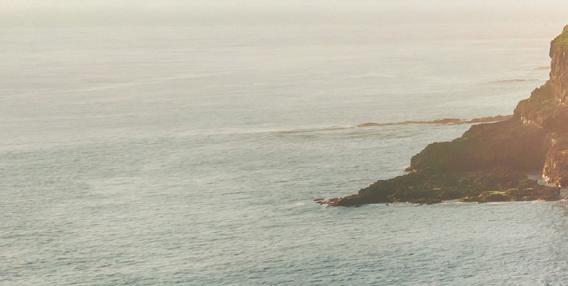
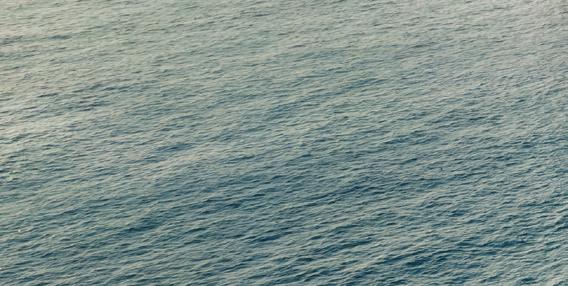








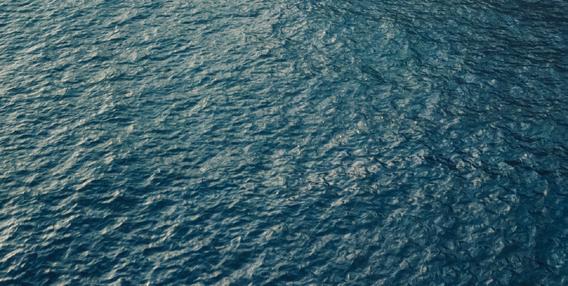






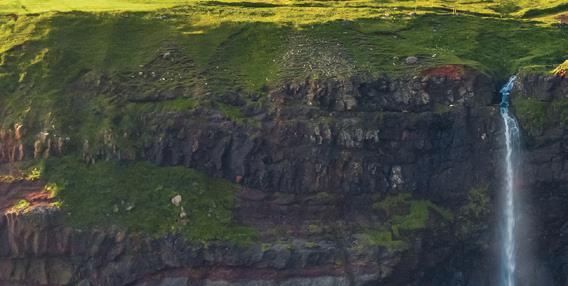











Delve into the Faroe Islands and go beyond the usual stops to experience the truly extraordinary. With the help of Regent’s experts in the unusual, you can explore the natural beauty of this wild North Atlantic archipelago with seamlessly arranged tailor-made and small group tours.



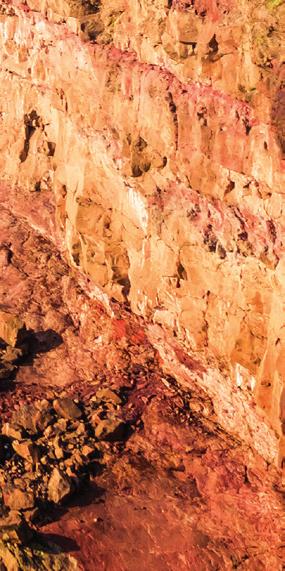
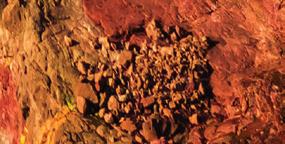
020

Our resident travel expert and founder of Charitable Travel, Melissa Tilling, answers your travel dilemmas. If you’ve got a consumer query or are in need of some inspiration for your next trip, email us your questions
QI’ve recently started volunteering in my local community, mostly with animals and wildlife. I’m really interested in working with more exotic wildlife – do you know of anywhere I can do this on holiday? And would I need to have a work visa or specific qualifications to do so? I’m open to ideas, I’d just like to do some good on my next trip!
Verity JonesAFor volunteering with exotic wildlife on your holiday, it’s essential to choose programmes that prioritise the welfare of animals and have a positive impact on conservation efforts. Charitable Travel has a clear policy on proper engagement with wildlife which means, among other points, no
contact so please do be mindful of that. Click here for our Animal Welfare policy.
Destinations such as Costa Rica, South Africa, India and Thailand offer opportunities to work nearby wildlife under carefully guided conditions.
Requirements vary by programme; some may require specific skills, while others provide training on-site. A work visa might not be necessary for volunteer work, but this depends on the destination’s regulations. Always check visa requirements and the credentials of the volunteering programme to ensure it aligns with ethical and sustainable practices.
Charitable Travel has a range of volunteering opportunities for engagement while on holiday. Click here for more details.

QI’m planning to take my family on holiday to southern Spain this summer during the school holidays, but we’d like to take the train from London over a couple of days and I’m confused about how best to book it. Because it’s the school holidays I’m keen to book as early as possible, but I understand some train tickets aren’t available until a couple of months out. I don’t want to miss out on accommodation by waiting until nearer the time we’re due to go, what can I do?
James BaldingATrain travel to Spain is a really great idea, in support of both reducing carbon emissions and taking a slower approach to travel with the joy that brings. Booking with Charitable Travel means we can offer options with tour operators who can confirm train tickets much further in advance than a customer booking rail-only direct with the train operators. You can plan knowing that your arrangements are firm for both rail and accommodation.
The other key advantage is that you have support on hand during your journey should a connection be missed by unplanned operational delays. With this help you’ll never be alone in a rail station with no onward plans. I took a quick look with one of our favourite travel partners who offers an 11-night rail trip including seven nights in Estepona on the Costa del Sol with four nights in stops en route each way to break up the journey, travelling 18 August 2024, and the price for two rooms for two adults and two children under 12 comes in at around £1,479pp. Eleven nights flying came in just £300pp cheaper but created 83% more CO2 emissions and is way less fun!
When many of us travel, it’s the cuisine of the destination that plays a significant role in our holiday planning. Gastronomy-focused tours are on the rise – they offer a great introduction to regional specialities – and getting to know the produce of a place provides ample opportunities to strike up conversations on cooking traditions and much more
WORDS BY Rashmi Narayan

Lithuanian cuisine is as complex as its history with many traditional dishes showcasing strong Polish and Russian roots. Having to rebuild itself in the 20th century, chefs across the capital are experimenting with traditional Lithuanian cuisine, taking flavours in new directions. Classic dishes have reappeared on café menus, such as šaltibarščiai – a bright pink, cold beetroot soup mixed with buttermilk and served with a hardboiled egg (the colour contrast is an Instagrammer’s dream, pictured here), or kibinai, a popular meat pie snack made with pork, sour cream and marjoram. Being a country with an avid foraging habit, many farmers markets in the city’s medieval heart introduce travellers to the Lithuanian diet by displaying staples from the woods such as berries, mushrooms and walnuts along with charcuterie, pickles and rye bread.

On a trip to Mexico, the culinary offerings of Oaxaca and Puebla are not to be missed. Both regions boast ancient culinary techniques and they’re also where mole (a spicy, nutty sauce) and mezcal (an agave spirit) are available in abundance. Craft your own food tour by starting at Puebla’s bustling Mercado de Sabores where you’ll find some chiles en nogada, a
Beyond the barbecues and burgers, it’s the soul food of Louisiana that is extraordinary. The Pelican State’s culinary heritage is greatly influenced by a hearty concoction of Cajun and Creole culture, which often rival each other. While staples such as gumbo, po’boys and beignets should be on your list, don’t miss out on a crawfish étouffée. This stew is somewhat technical to balance correctly and though some may argue that it is a cousin to the jambalaya, it’s the roux of an étouffée that gives it a deep, complex flavour and makes it a triumph. For some deep-fried indulgence, stop at any of the gas stations dotted along the Interstate 10 and try a portion of boudin balls (ground pork and rice). Beyond New Orleans, smaller towns like Lafayette boast outstanding spots where you can enjoy some traditional brunch with live jazz or zydeco music.
gastronomic treasure of stuffed poblano peppers drenched in a creamy walnut sauce, before heading to Mercado 20 de Noviembre in Oaxaca for mole poblano. Comedor Chabelita serves a classic black mole for breakfast along with enchiladas or tamales (stuffed corn dough). Feeling extra adventurous? Try the chapulines – toasted whole grasshoppers.
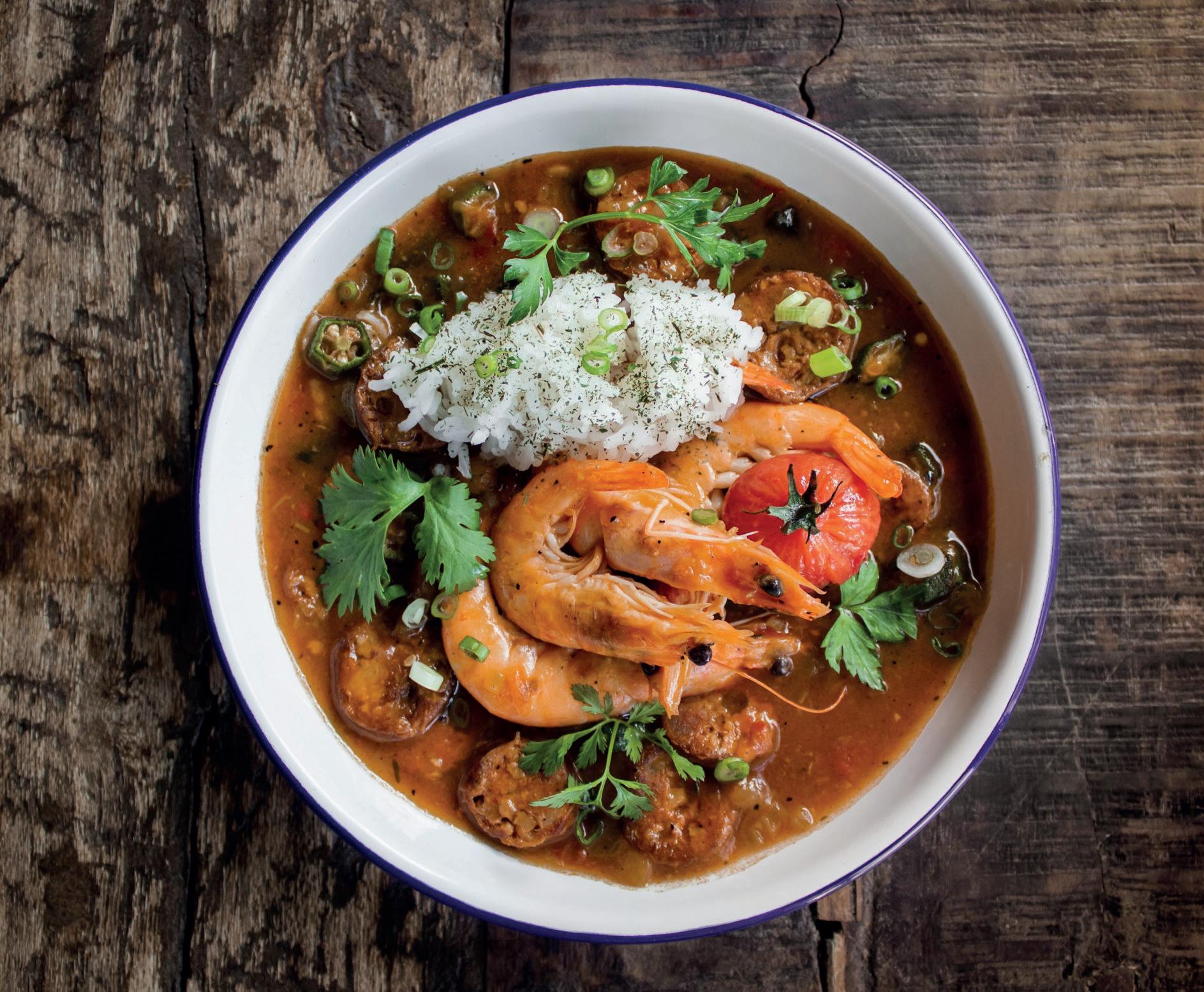
In north-eastern Thailand, you’ll find the charming province of Kalasin, the centre for the country’s popular Isaan cuisine that’s based on sticky rice and spices. Food stalls open especially early here –some even start at 2am and end up selling out their star dishes, such as grilled chicken with fermented fish sauce and sticky rice, by dawn. Not to worry, as there’s still a lot to be enjoyed by lunchtime, such as the salt-crusted roasted fish called pla pao Though each cook prepares the dish (typically using tilapia fish) in their own style, the fish is ordinarily stuffed with pandan leaves (some use kaffir lime leaves), covered in a thick layer of salt then grilled over flaming charcoal. Order a fiery papaya salad to accompany your pla pao to get a true balance of flavours. If getting to Kalasin is a stretch, there are eateries in Bangkok such as Som Tam Jay So that proudly serve Isaan cuisine.


5
Trinidad and Tobago has everything you’d want in a Caribbean holiday – it’s an idyllic island speckled with rainforests and surrounded by stunning blue waters. Beyond its beautiful landscape, the food is equally magnificent with a fascinating blend of Indian and African culture. The most famous dish is doubles, which draws inspiration from the Indian chole bhature. Spiced yellow chickpeas are served on a deep-fried flatbread called bara and laced with tangy chutneys made with tamarind and ubiquitous local greens called shado beni Being a firm favourite, it is evident how deeply Trinidadians and Tobagonians value their culinary heritage. Though the Central Market in Port of Spain is a good spot to have your first doubles, there are numerous food trucks, most of which are family-owned, serving these across the island.
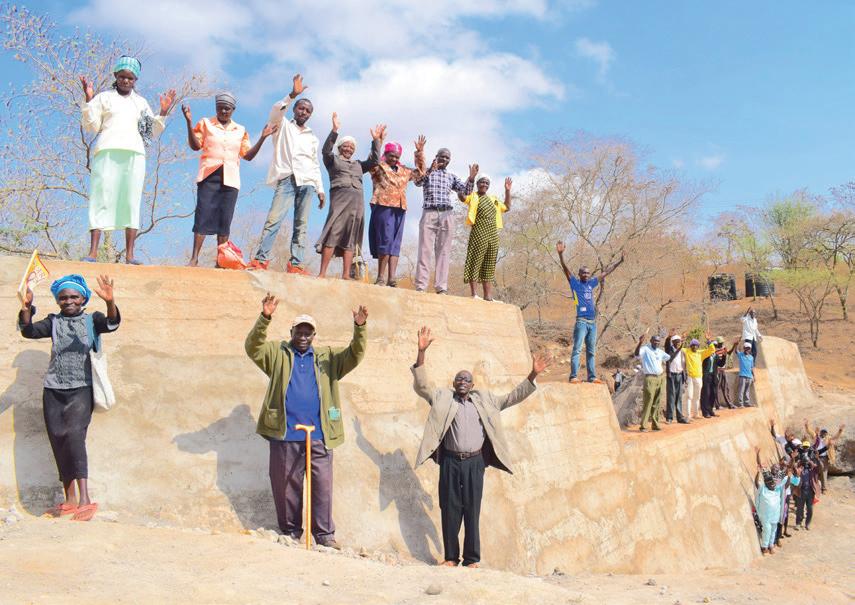



Sand Dams Worldwide work with in-country partners to help vulnerable dryland communities to build sand dams; a sustainable, cost-effective rainwater harvesting technology that can capture up to 40 million litres of water, replenishing every rainy season. That water is stored safe from disease and evaporation within the sand. Extractable via pipework connected to hand-pumps and taps, one sand dam can provide enough year-round water for over 1,000 people, and last upwards of 60 years with no maintenance or operational costs.
Sand dams play a significant role in mitigating the effects of climate change, including reversing land degradation. They raise groundwater levels through slowing down the rate of run-off and capturing rainwater that would otherwise be lost as run-off, while allowing most water to continue downstream. The slowing down of water run-off allows water to infiltrate the soil, resulting in vegetation recovery, reduced erosion and restored degraded land and regreened environments.
Help more communities to build sand dams and transform their own lives and land here: charitable.travel/sand-dams-worldwide

Though the Michelin star-studded regions of Catalunya and Basque Country get a lot of attention, the rice dishes and viticulture of more southern Murcia deserve due credit. Dishes like paella may be Valencia’s pride but Murcia, which is dubbed the ‘Garden of Europe’ is speckled with rice fields. It serves its own rice speciality called caldero, meaning cauldron, that is served with a garlic-heavy aioli. Head to the coastline, between Mar Menor and Cartagena, that is fringed with rocky bays and golden sands and stop by beach tavernas called chiringuitos to pair a portion of caldero with tinto de verano, a refreshing local red wine spritz.

This ancient student city has long been the hub for some of the world’s most celebrated dishes. The region’s culinary ancestry is based on some of Italy’s staples, such as egg-based, stuffed pastas and meat-heavy sauces such as ragù (often mistaken as Bolognese by tourists). Ask any local in Bologna and they are likely to choose the tortellini as their top dish, but they’ll also never say no to a big bowl of tagliatelle alla ragù. Beyond Bologna, every meal in Emilia-Romagna is a nod to gastronomic traditions that date back to the Middle Ages. Retaining ancient traditions in cheesemaking (Gran Padano, Parmigiano-Reggiano) and balsamic vinegar production, these products have become the stars of the table.

Communities around the globe need our help more than ever. At Tourism Cares, we believe in the power of travel to enact positive impact and help the people and places we visit thrive.
Help us drive meaningful change and ensure a sustainable future by donating to Tourism Cares.

info@tourismcares.org


@TourismCares
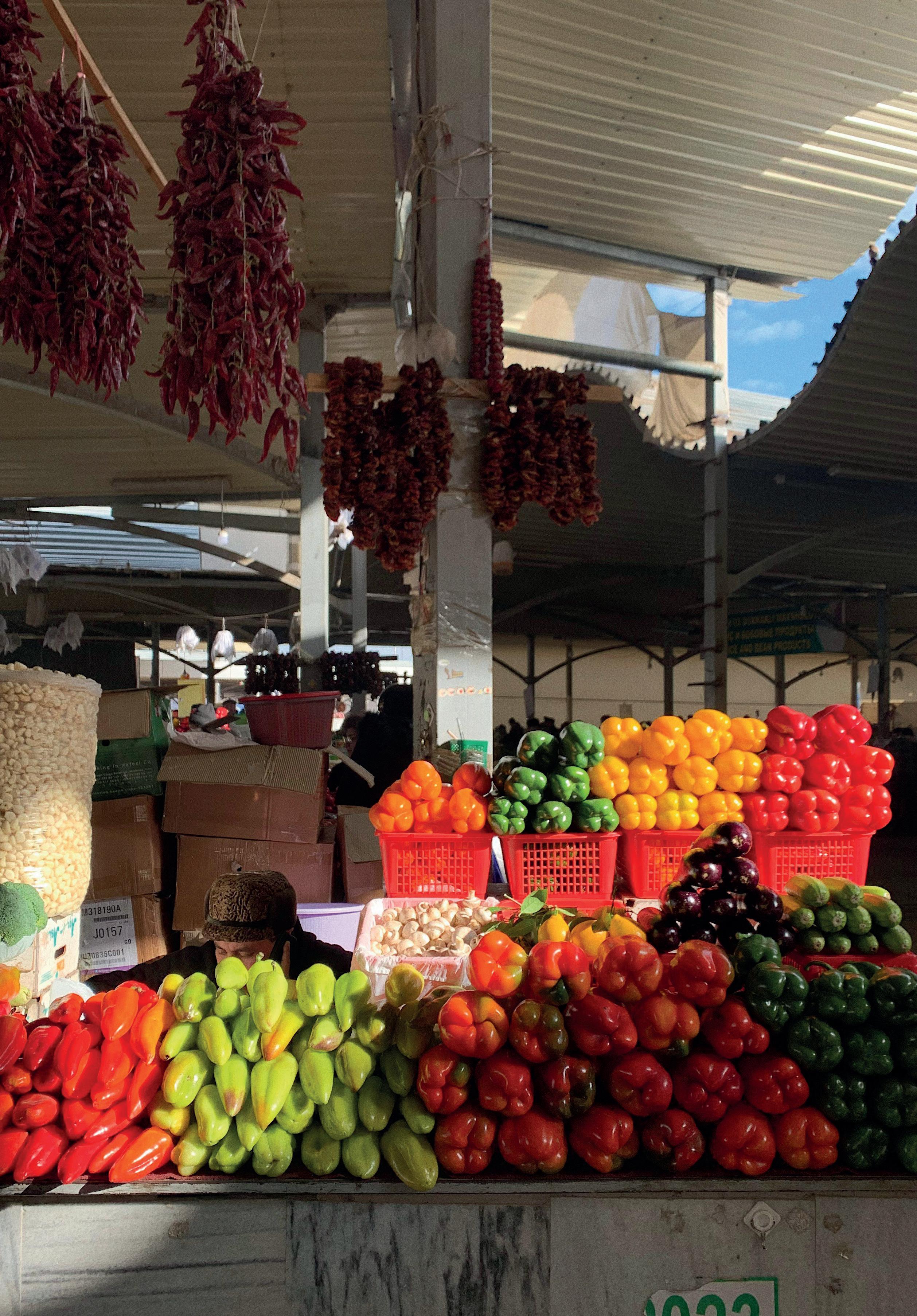
From flavourful somsas (baked pastries filled with mutton or potatoes) to a hearty plov (rice dish), this underrated city, which was an integral trading centre of the Silk Road, is a true gem. While visitors are likely to make their journey to admire the majestic, turquoise-hued minarets of Samarkhand, food is certainly a draw in Uzbekistan and there are many food tours to choose from in Tashkent. Friendly vendors in its main bazaar will gladly let you sample some fresh bread called obi non. Go easy on the plov as the rice is rich and oily but opt for a manti (steamed dumplings stuffed with meat) for a lighter option. Summers in Uzbekistan welcome an abundance of fruit, ranging from juicy pomegranates to apricots, apples, figs and peaches and there’s even a melon festival held every September.
DAKAR, SENEGAL
West African cuisine has gained prominence over the last decade and Senegalese cuisine kicks up the spice levels a notch, where the local chillies are heavily incorporated in most recipes. At Dakar’s popular market, Marché Kermel, you’ll find all sorts of paraphernalia, but you’ll also notice the fresh ingredients that go into making a thieboudienne, the national dish of Senegal. This slow-cooked, one-pot broken rice delight carries strong French influences and a multitude of flavours with each bite. It is a true labour of love that includes marinated fish, such as white grouper, which is then combined with herbs and tomato puree and prepared over several hours.

KERALA, INDIA
It can be daunting to understand where to eat good food in India, but for those with a broad palate, the southern state of Kerala is the place to be. Its steaming dishes, often infused with coconut, come with their own heritage and style that is hard to replicate elsewhere in the country. There are dishes with a spicy kick here too, but the ones to try, to truly relish the region’s softer flavours, are its breakfast dishes. Head to one of the eateries in the coastal expanse between Kochi and Alleppey and order a rice and coconut pancake called appam with a mild vegetable stew or a plate of puttu, a steaming cylinder of layers of rice and coconut, with a black chickpeas kadala curry.
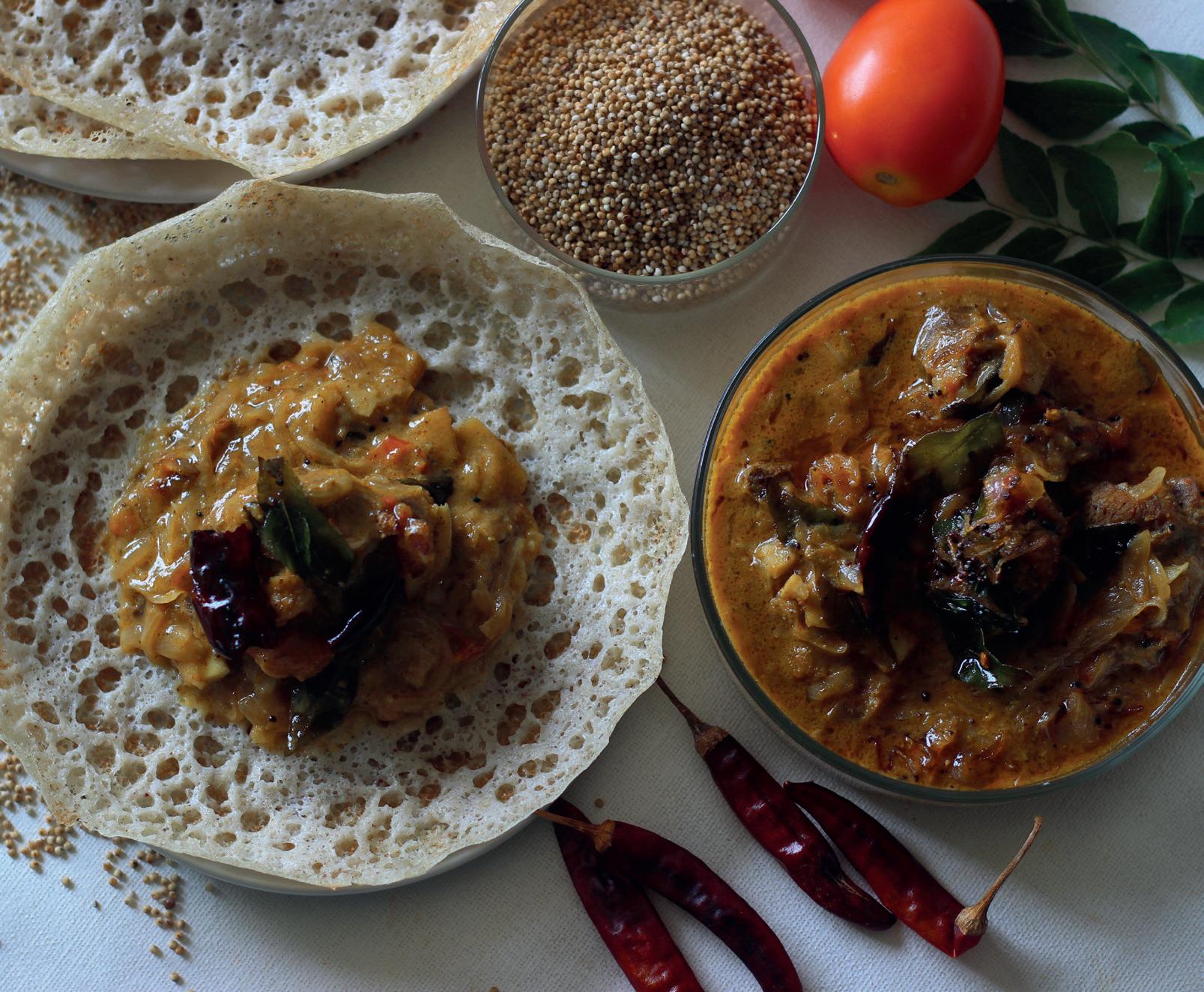
Close to the border with Sweden, the mountain resort of Trysil, in Norway, is classic Scandinavia. Lots of pine trees, log cabins and snow-covered rolling hills unfold in every direction and my first impression is just how much space there is here.
I’m visiting at Easter with my family to catch the end of the ski season and, being this far north (Trysil is two and a half hours north of Oslo), we’re greeted with plenty of snow, crisp temperatures and long, light days. We later learn that Easter can be a bit of a sweet spot – visit earlier in the season and while the snow conditions may be better the temperature doesn’t often get often above freezing.

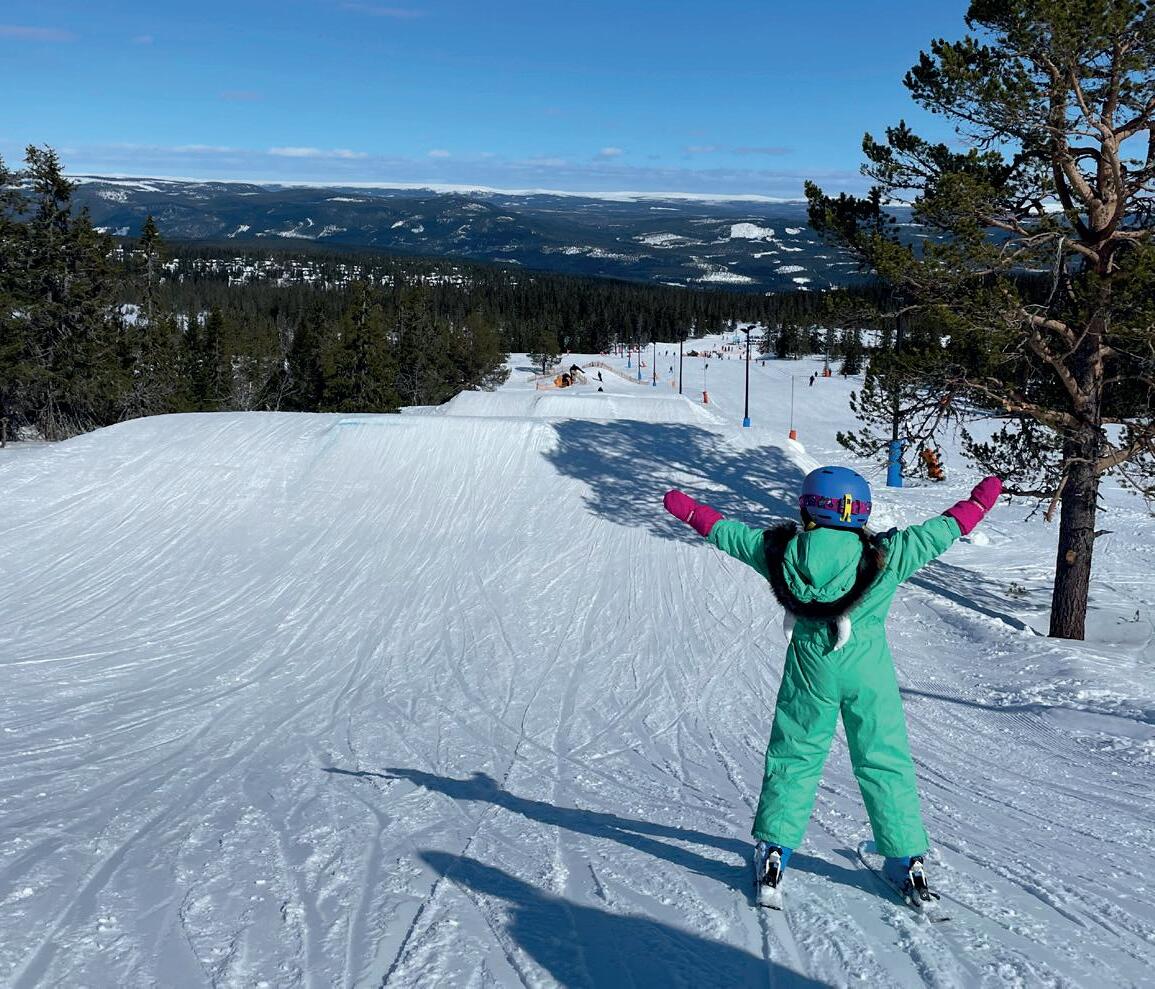
red and black runs.
Doing his best to make sure everyone feels welcome is the resort’s mascot, Valle the snowman. Regularly dropping in on the children’s ski lessons, we spot him leading an impromptu conga on skis and high-fiving all the kids as they get on the ski lift.
Trysil is as popular in summer as it is in winter, with lots of hiking trails and cycle paths
Norway’s largest ski resort, Trysil has over 70 slopes, including a fun run packed with jumps and banked turns that my six-year-old daughter would happily spend all day on if she could, lots of gentle green and blue runs that sweep through the peaceful pine forests, and some seriously steep
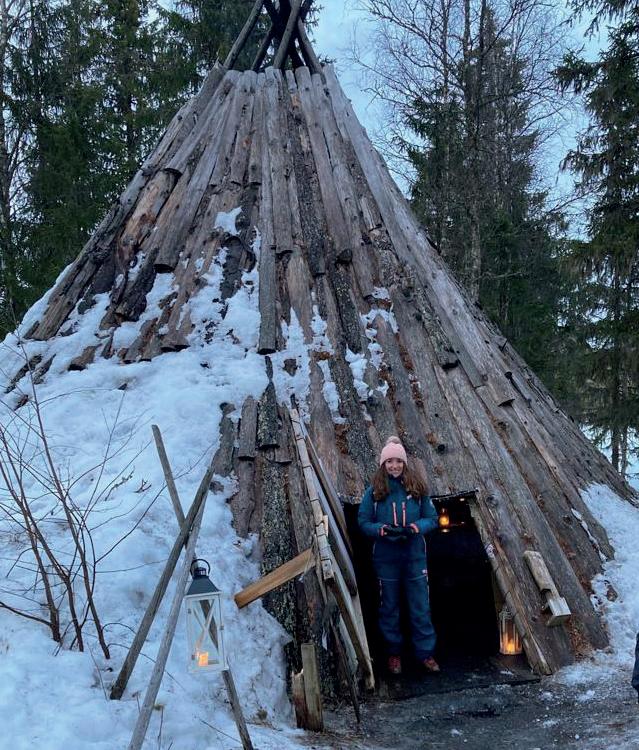
It’s just one of the things Trysil offers to make this a very family-friendly ski resort. Others include free lift passes for children up to the age of six, the friendliest and most enthusiastic ski instructors going, and lots of ski-in/ ski-out accommodation (including ours, the SkiStar Lodge Trysil) so everything is as easy as possible for little legs.
Between hot chocolate stops, sledging, swimming in the hotel pool and lots of skiing, we also fit in a horse drawn sleigh ride from the Trysil Hestesenter, into the woods and a teepee that the family build at the beginning of winter to hold dinners.
Hosted by Svein Eriksen, we eat lingonberry soup followed by moose stew then apple cake with cloudberry ice cream. As we sit around the fire, Svein tells us the moose had been shot a kilometre away from the teepee by one of his 17-yearold apprentices and had kept them going all winter. It’s all about keeping things local here!

Ferry companies and train operators are working together to make it easier for foot passengers to travel overseas from mainland Great Britain, says Richard Hammond. It’s all about the joy of rail and sail

The modernisation of ferry services has revolutionised the experience of travelling across the Irish Sea, North Sea, and The English Channel. This is especially the case for longer overnight crossings to the continent where you can travel in style on spacious ships, enjoy fine dining in à la carte restaurants, have a spa treatment, and sleep in comfortable en suite cabins, so on arrival you feel refreshed for the onward journey. There are also plenty of facilities to keep children entertained during the
to take the train to and from a ferry crossing is Stenaline’s Sail & Rail ticket to the Netherlands. Known as the Dutchflyer, it’s a combined train and ferry ticket from London Liverpool Street (or any National Express East Anglia station, such as Cambridge, Colchester, Ipswich and Norwich) to Harwich International port, from where you can catch either the morning or overnight Stena Line ferry service to the Hook of Holland, and travel onwards to elsewhere in Holland. Harwich International railway station is
Ferry services have long been the obvious option for car drivers, but cyclists and foot passengers can also enjoy the benefits of the improved services
crossing, including soft play areas, games rooms, live entertainment and cinemas. Europe has never felt closer.
Ferry services have long been the most obvious option for car drivers, but cyclists and foot passengers can also enjoy the benefits of the improved services. The ports on both sides of the crossing are mostly well connected by public transport, so it’s easy to travel by bus or train to the ports in the UK, as well as disembark on the other side and continue the journey overland – see Green Traveller’s guide to travelling as a foot passenger
One of the most popular initiatives in recent times to encourage passengers
immediately adjacent to the port, so it is a quick transfer from the train platform to the ferry check-in, and on the other side, it’s the same quick transfer off the ferry to the Hook of Holland railway station, which has train services to Rotterdam, Amsterdam and beyond. There’s a similar initiative for travelling from the UK to Ireland. Both Stena Line and Irish Ferries allow you to book both the rail and ferry legs of your journey in one go, known as a Sail & Rail ticket, at a price that is much lower than if you booked the two legs separately. This combined train and ferry ticket can be for journeys from anywhere in Great Britain to anywhere in Northern Ireland and the




Republic of Ireland via the UK ferry ports of Holyhead, Fishguard or Cairnryan. The Sail & Rail option is also available back from Ireland to the UK.
There is no option to upgrade with these special Sail & Rail fares, but one of the distinct advantages of this Sail & Rail package is that the fares come at a fixed price, which doesn’t increase in peak travel periods or are dependent on how far in advance you book. There’s a 50 per cent discount for children aged 5–15, while those aged 0–4 travel free.
Happy green travelling!
Next issue: The renaissance of rail in Europe
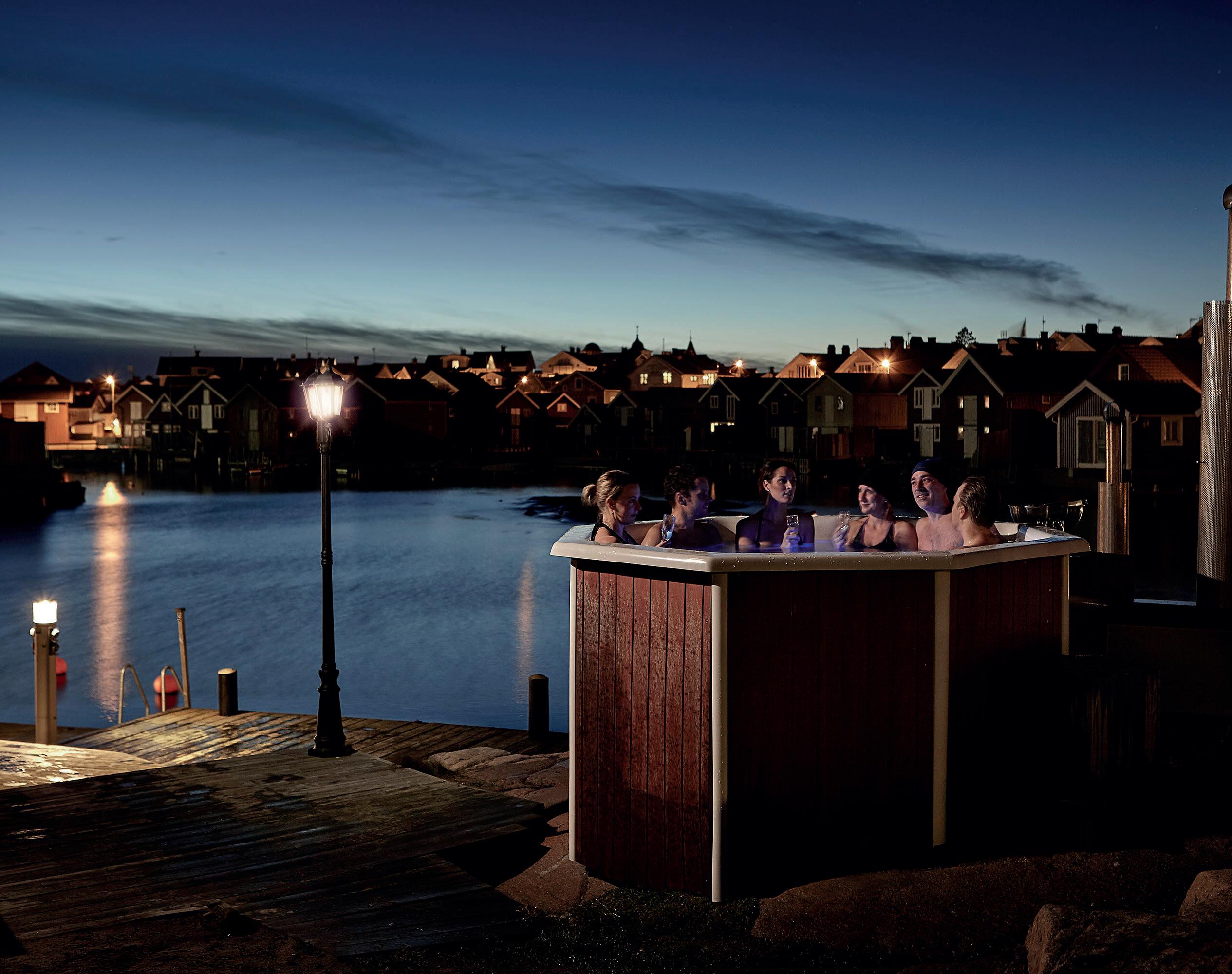

Welcome to West Sweden, a vast region that’s a wonderful mix of forward-thinking cities and truly wild landscapes. This corner of the country is home to Gothenburg, officially the most sustainable city on the planet (says the Global Sustainability Index), as well as the Bohuslan archipelago of 8,000 incredible islands, pristine lakes, cosy cabins – and some highly-coveted cinnamon buns.

Feel like stretching your legs? Nine signposted stages of this beautiful hiking route wind through sun-dappled woodland and then hug the coast of West Sweden, passing traditional red-painted cabins and tempting swimming spots, and even encircling an island – Ramsvik, a nature reserve known as the ‘kingdom of rocks’ for its smooth granite boulders.


West Sweden’s coastline is a treasure trove of sustainable treats, and an increasing number of restaurateurs and producers are getting inspired by the available seafood, or blue food, as it’s known locally. Mussels, oysters, sea weed and even sea cucumber and glass shrimp are readily available and at their best outside of the summer months. Farmed responsibly (as it is here), blue food is both good for us and good for the environment.
Fika is the timehonoured Swedish ritual of a coffeeand-cake break, usually taken at 10am and 3pm. A kanelbullar cardamomcinnamon bun is the classic fika sweet treat – try some of the region’s very best at:
Home of the hagabullen, an enormous(sly good) cinnamon bun.
A disused paper mill transformed into a vibrant cultural centre, Not Quite is an arts hub that also deserves to be known for its coffee and cakes.
The town of Alingsås is the capital of fika in Sweden – join a café-hopping fika tour or just head straight to Nygrens for amazing homemade bread.
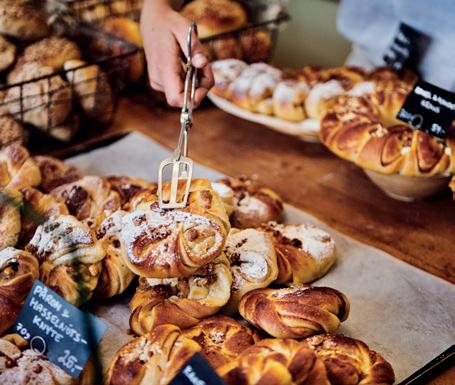

The charming Meet the Locals scheme hooks up visitors with volunteers from all over West Sweden for the day. Sign up to the scheme and you could find yourself hiking along the Gothenburg Canal with Alf, exploring the island of Tjorn with Malin, or road cycling with Pontus around Mariestad, each offering their own unique perspective on the place.
 DOWNTOWN GOTHENBURG
DOWNTOWN GOTHENBURG

Escape far from the madding Wi-Fi signal to the shores of Lake Iväg and stay off grid in one of the 72 Hour Cabins (others are dotted around the region too). Built of glass for an uninterrupted view of the stars, the cabins sit on their own peninsula and are only bookable for 72-hour slots – apparently, that’s how long you’ll need to stay to significantly lower your stress levels. Spend your days kayaking, SUP-ing and fishing on the glassy waters of the lake and keep eye out for neighbouring elk.


Sweden’s second-largest city and sustainable poster child Gothenburg is a wonderfully peoplefriendly place, with a pedestrianised city centre and a goal of running 100% emission-free transport by 2030 (locals whizz about on bikes, hop on electric trams, or rent sustainably designed electric boats). It doesn’t take itself too seriously, though – there’s great nightlife, quirky vintage shops and a Nordic foodie scene that champions ethicallysourced ingredients.
The province of Dalsland is often called ‘Sweden in miniature’ due to its pocket-sized layout of lakes, islands and forest
With 8,000 islands to choose from in West Sweden’s archipelago, it’s hard to play favourites. A sustainable place to start is car-free Dyrön, where you’ll find mouflon sheep, a roundisland hiking route and a gorgeous community sauna perched by the sea. Neighbouring Tjörn is an art lover’s dream, home to the Nordic Watercolour Museum and the Pilane Sculpture Park.
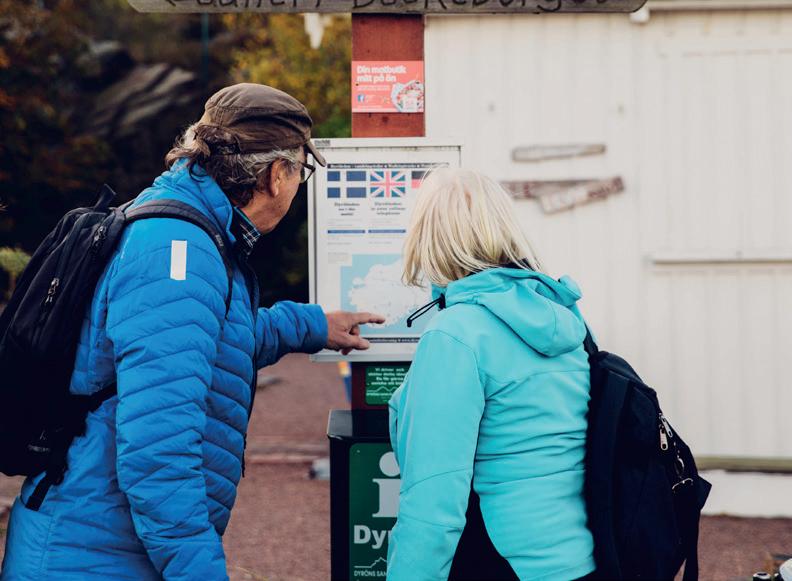


As the custodian of the island’s historical legacy, Jersey Heritage offers visitors the chance to stay in some of its special historic properties. Elaine Wilson checks in
Waking up in the centuries-old Fort Leicester, I completely lose track of time. The morning sunlight is filtering through the high casement windows and the thick stone walls muffle any outside noises. It’s a similarly timeless sensation across the island as I watch the sun set from the battlements of Elizabeth Castle, with its panoramic views out to sea.
As I’d booked to stay in these Jersey Heritage properties, I was not only enjoying some unique accommodation but also helping contribute to the preservation of the island’s cultural treasures. It’s a chance for visitors to become part of the living narrative of Jersey, where the past becomes the present, and you can add your own little chapter to the building’s story.
Set in the English Channel, and closer to the French coast than England’s, Jersey stands as a testament to the rich tapestry of AngloEuropean history and heritage that makes up the very fabric of this small Channel Island.
With roots reaching back thousands of years, Jersey has witnessed many conflicts and even occupation by the Germans during World War Two. This has left Jersey with a legacy reflected in its rugged


landscapes and more than its fair share of strategic defences.
Fort Leicester, built into a high cliff overlooking beautiful Bouley Bay on the north-east of the island, serves as a sentinel frozen in time. First constructed in the 17th century as a bulwark against French invaders, its weathered stone steps echo with the footsteps of soldiers long gone. Now a spectacular three-tier stay for the adventurous visitor, Fort Leicester stands as a silent witness to the resilience of the islanders. And due to how it sits within the surrounding rock face, visitors
have to go outside to get from one level to another. It provides a great opportunity for youngsters (or the moderately fit) to run off their energy on the many flights of steps that are part of the structure. A most unusual place to stay, the first level of the fort houses the small kitchen, lounge and outside dining area. The second level is up a flight of very steep stone steps to a bunkbed bedroom and a separate flight of steps to the only bathroom (it really is a loo with a view!). The third set of steps takes you up to the large main bedroom, which has a double bed

plus two singles. There’s an open log fire in this bedroom and I fall asleep to the sound of the ocean drifting up the cliff side of my protected eyrie.
On the other side of the island close to the capital of St Helier, Elizabeth Castle sits a mile out at sea. I cross to the castle on foot, walking across the causeway in about 15 minutes as the tide is out. Later, when the tide is in, I experience the thrill of a ride on the fabulous amphibious vehicle, Betty, both a bus and a boat, depending on water levels.
Named after Queen Elizabeth I, this ancient fortification has witnessed
Once the day visitors have gone I have the run of the castle and its extensive battlements – I could gaze out to sea from the top of the castle all day
sieges, skirmishes and bombing raids over its lifetime. I feel like I’ve stepped back in time to 1781 when I meet the Castle Gunner, who tells me the story of the Battle of Jersey. Be prepared to be drafted into the Midday Parade, when the musket and cannon are fired.
The comfortable castle apartment sleeps six and faces directly into the castle’s quadrangle. It’s cosy and warm, with a large bedroom with a double and two singles upstairs, and a sofa bed in the lounge, next to the spacious kitchen, downstairs.

The castle guardian lives just next door should you need any help with anything, and once the day visitors have gone I have the run of the castle and its extensive battlements – I could gaze out to sea from the top of the castle all day, and there is even a little private beach I have all to myself. You really can be King (or Queen) of your very own castle for the night.
Another amazing Heritage let available through Jersey Heritage is the Radio Tower, which has a jaw-dropping 360-degree view from the lounge. Set on a cliff-top overlooking Corbière lighthouse on Jersey’s south-west tip, the Radio Tower provides stunning self-catering accommodation over six floors. Built during the Second World War by German occupying forces, the Tower has been sympathetically restored in a German modernist style. A concrete staircase winds through the centre of the building, up six floors, to a wooden spiral staircase that takes you to the top floor. Authentic features include observation slots on the seaward side and steel doors on the ground floor. The second, third and fourth floors house three identical double bedrooms, each customised within the rounded walls of the Tower. This is the original high-rise living! I leave the island with a renewed sense of its identity and a deeper connection with its stories – while the walls may not be able to talk I feel like these old buildings have done a great job of sharing their secrets with me.
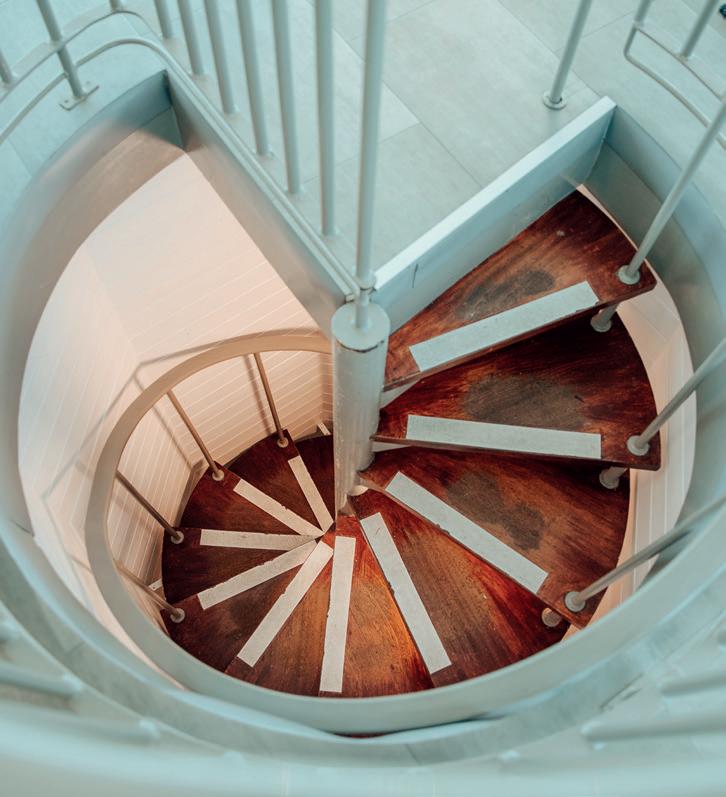



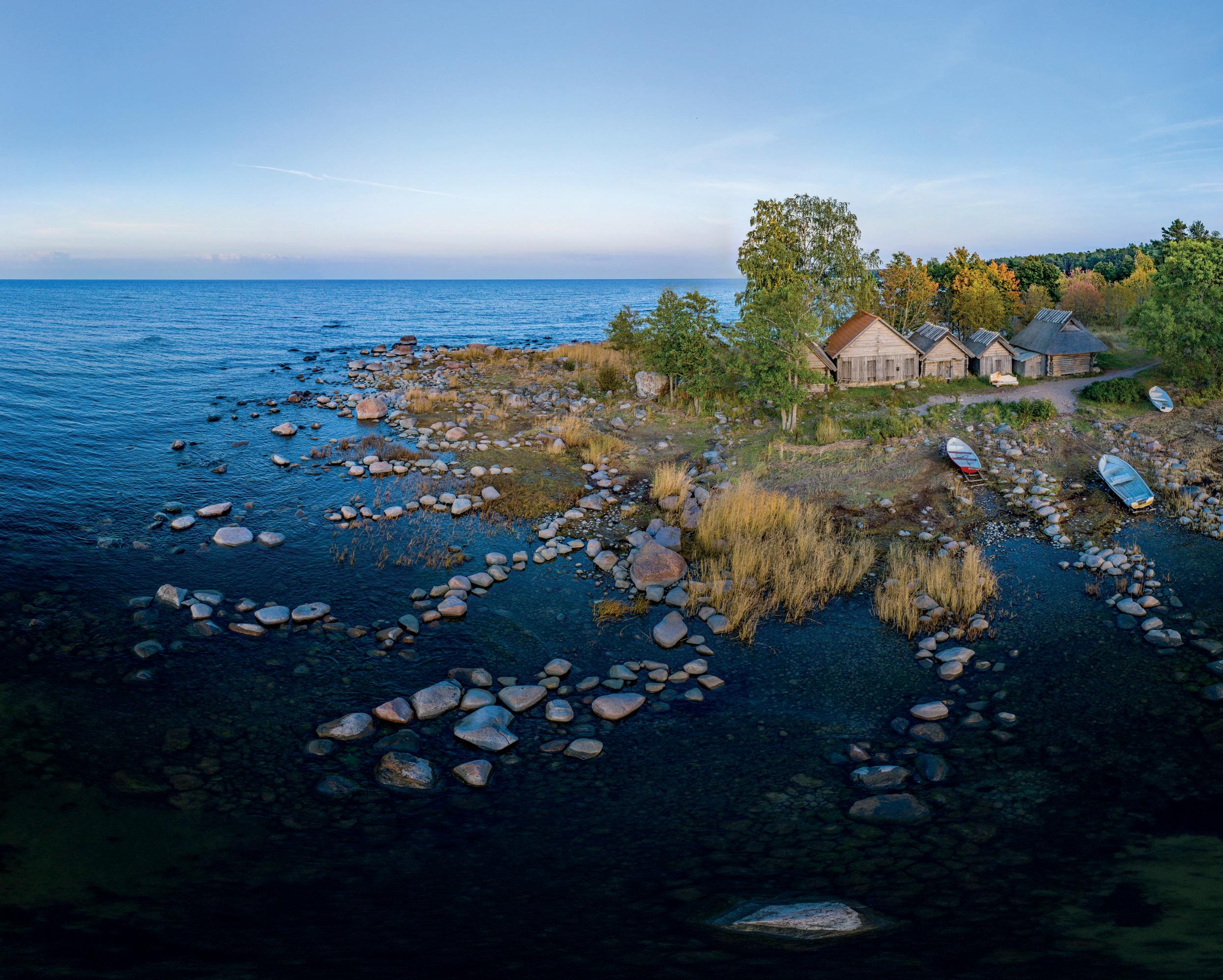
City restaurants in Lithuania, Latvia and Estonia are embracing the concept of low food miles and looking to their immediate surroundings to serve up inviting menus. Suzy Pope takes a seat
The natural bounty from the cold-water seas, rivers and forests has fed the people of Lithuania, Latvia and Estonia for centuries. Realising the best way to keep food miles low is to embrace the cooking techniques and traditional ingredients of their ancestors, innovative farm-to-table restaurants have cropped up in Vilnius, Riga and Tallinn, creating a sustainable food scene akin to Scandinavia’s New Nordic movement.
Between the icing-pink and sunflower-yellow neoclassic buildings of Old Town Vilnius, I’m in search of food that celebrates Lithuania’s local produce. Senatorių Pasažas was the

passion project of a Danish entrepreneur who lived in Vilnius for years before transforming this beautiful old mansion into a gastronomic playground. Alongside a vibrant food hall and farm shop, there are two fine-dining restaurants inside. I opt for Nineteen18, where head chef Matas Paulinas’ menu is primarily fed by the Farmer’s Circle, a community farm just outside the city.
At the chef’s table, I watch as skilled hands prep an indulgent 10-course tasting menu of rose-pink venison and foraged trumpet mushrooms. There’s a dedication to zero waste here, with chefs using ancient techniques of pickling and preserving to keep surplus ingredients for future dishes, while the alcohol pairing eschews wines from countries and continents thousands of miles away in favour of local natural wines and Baltic beer and cider. Deserts vary wildly from a brown butter ice cream with birch syrup fermented with ants (no, that’s not a typo) to creamy dishes sweetened with the country’s pride and joy – honey.
Beekeeping in Lithuania dates back to when folk would offer homemade honey to the Pagan gods. The age-old techniques can be discovered at the Beekeeping Museum in Stripeikiai. Moving on from the city, I venture out to find the source of last night’s dinner. Farmer’s Circle is a sprawling 600-hectare operation on the border of Vilnius County. On an organised farm visit, I tour glass houses, vast fields of buckwheat and polytunnels packed with soft fruit, spotting the organic cucumbers and kohlrabi that garnished each perfectly crafted plate at Nineteen18, just 55 miles away. After a farm visit, you can sample produce straight from field to table at the on-site restaurant in a beautiful old barn and the farm shop is packed to the high rafters with jar upon jar of pickles, jams, porridges and syrups to take home for a tasty reminder of Lithuania.
Between the jagged church spires and onion domes in the historic heart of Riga, the Central

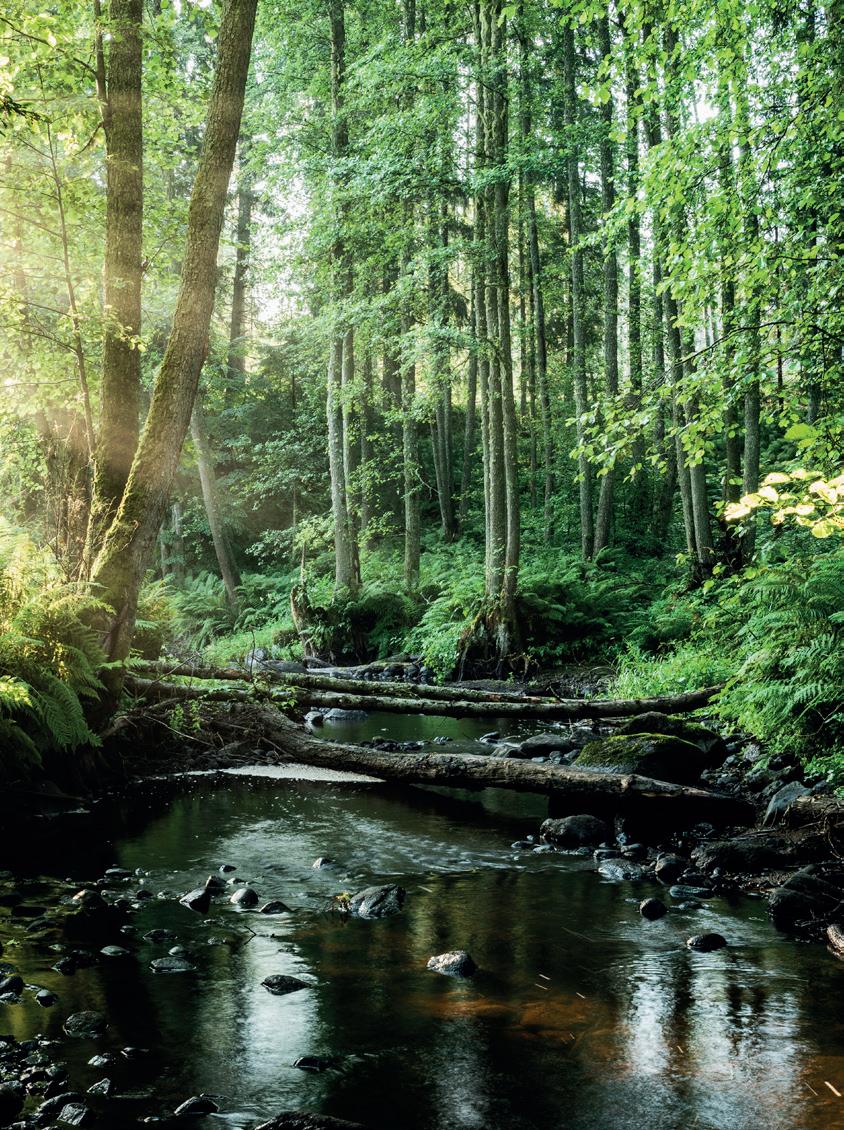
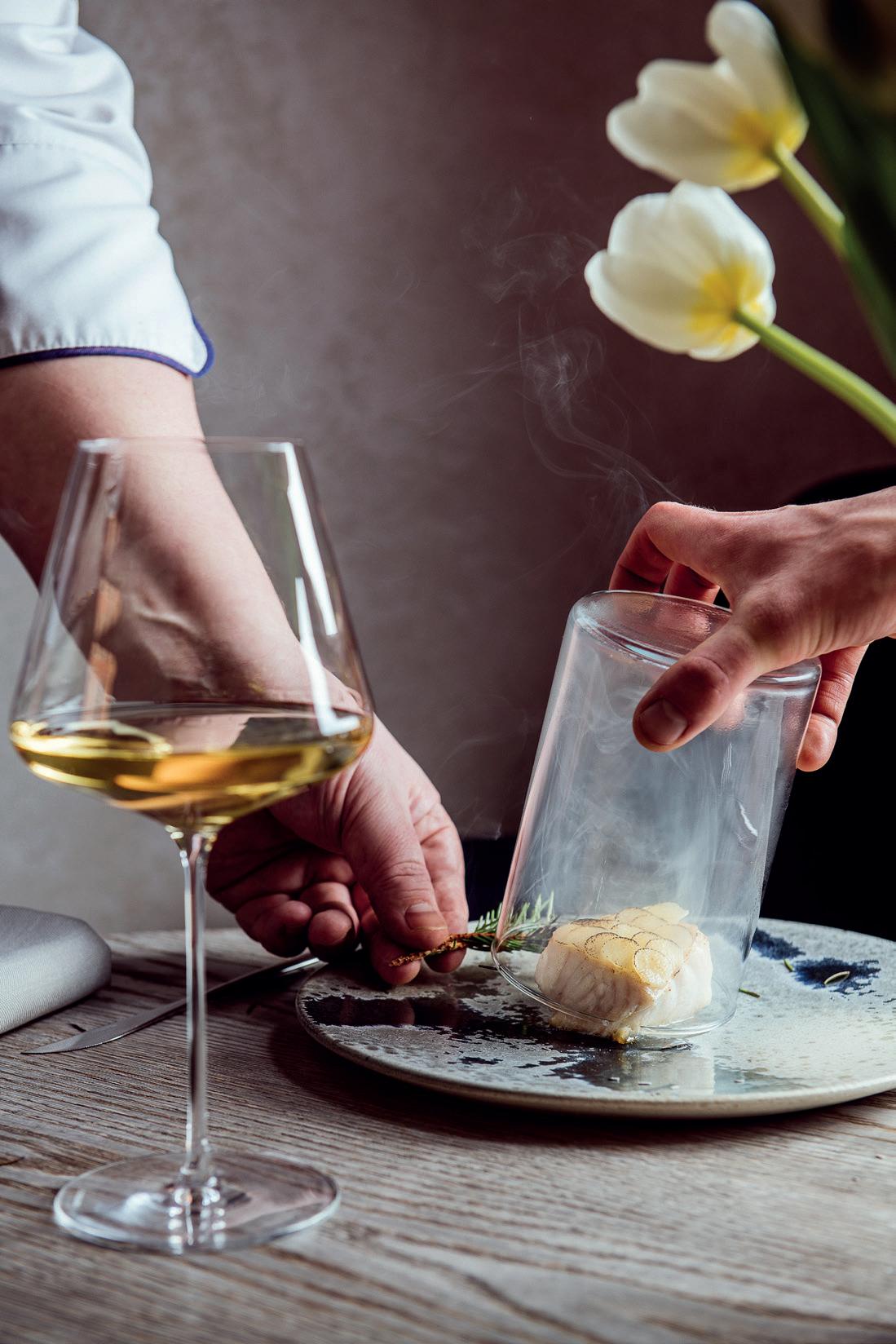


Market takes pride of place in the city. Inside four former zeppelin hangars, stalls overflow with produce from the surrounding farms and forests. I could spend hours wandering lanes of pickles, smoked fish and vegetables, but I have dinner plans.
The menu at Barents restaurant is an ode to Latvia’s climate, showcasing cold-water seafood from the icy Baltic depths and a selection of cold-climate wines to accompany it. Their seafood platter, usually featuring grilled herring, shows off the variety of the Baltic Sea and it changes according to season. Chef Dzintars Kristovskis says, “It is absolutely necessary that we undergo changes with every season, every year, and every new thought and impulse. Gastronomy must be sustainable and meaningful.” He speaks to the Latvian tradition of using produce from the local area when introducing the autumn menu: “It is a story about the best possible result using what is available, just like our ancestors have done.” The crab bisque is a
NOA BARNETS RESTAURANT NINETEEN18 LAHEMAA NATIONAL PARK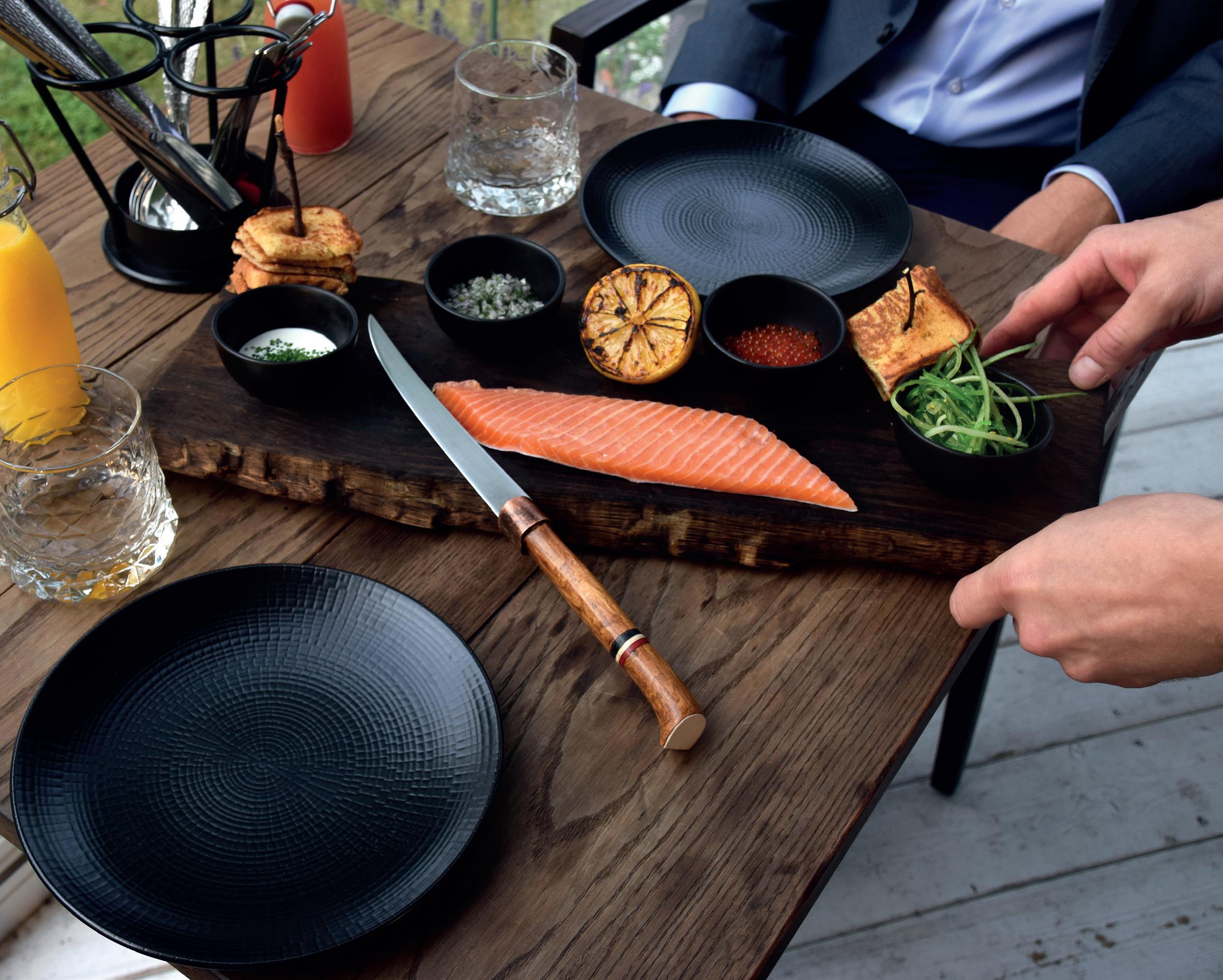
A medley of foraged chanterelles and potatoes with the satisfying zing of pickled cucumbers shows off flavours that have been in Estonian cooking for centuries
warming starter and the hand-dived scallops are a worthy main and some of the biggest I’ve seen – meaning they’ve been left to enjoy life in the Baltic Sea long enough to grow, breed and repopulate.
Along the coast from the medieval city centre, there’s a lot of buzz around NOA –a fine-dining restaurant overlooking the Bay of Tallinn. Dishes served in the casual restaurant and at the Michelin-starred Chef’s Hall next door embrace the ethos of New Nordic cuisine, using the length and breadth of Estonia’s natural larder. The tasting menu features dishes of elk and fire leek, white fish and caviar, and pumpkin and buckthorn. Fried white fish perfectly crisped with a hint of wild garlic, or a medley of foraged chanterelles and potatoes with the satisfying zing of pickled cucumbers shows off flavours that have been in Estonian cooking for centuries. To understand more about Estonia’s food
traditions, I head 40 minutes north to the Lahemaa National Park. Here, walking trails meander across marshland, forest and along the sea. On the Majakivi nature trail hike, I spot blackcurrants, mushrooms and the wild garlic that flavoured NOA’s dishes, yet these wooden walkways feel a world away from the city. Sipping a tart apple wine at a picnic table in the quiet forest of the Lahemaa National Park, I marvel at this landscape. All the ingredients for indulgent evening tipples, Michelin-starred tasting menus and celebratory dinners are right here. This new old food movement across the region shows that there’s no need to look beyond the borders of the Baltics to stock the restaurants, bars and food halls of the cities.
Feeling inspired? Experience the magic for yourself by booking Sustainable Journeys 11-night Baltics by Electric Car trip

Lucy Shrimpton combines the heights of New York with the winter wonderland mountains upstate
Book

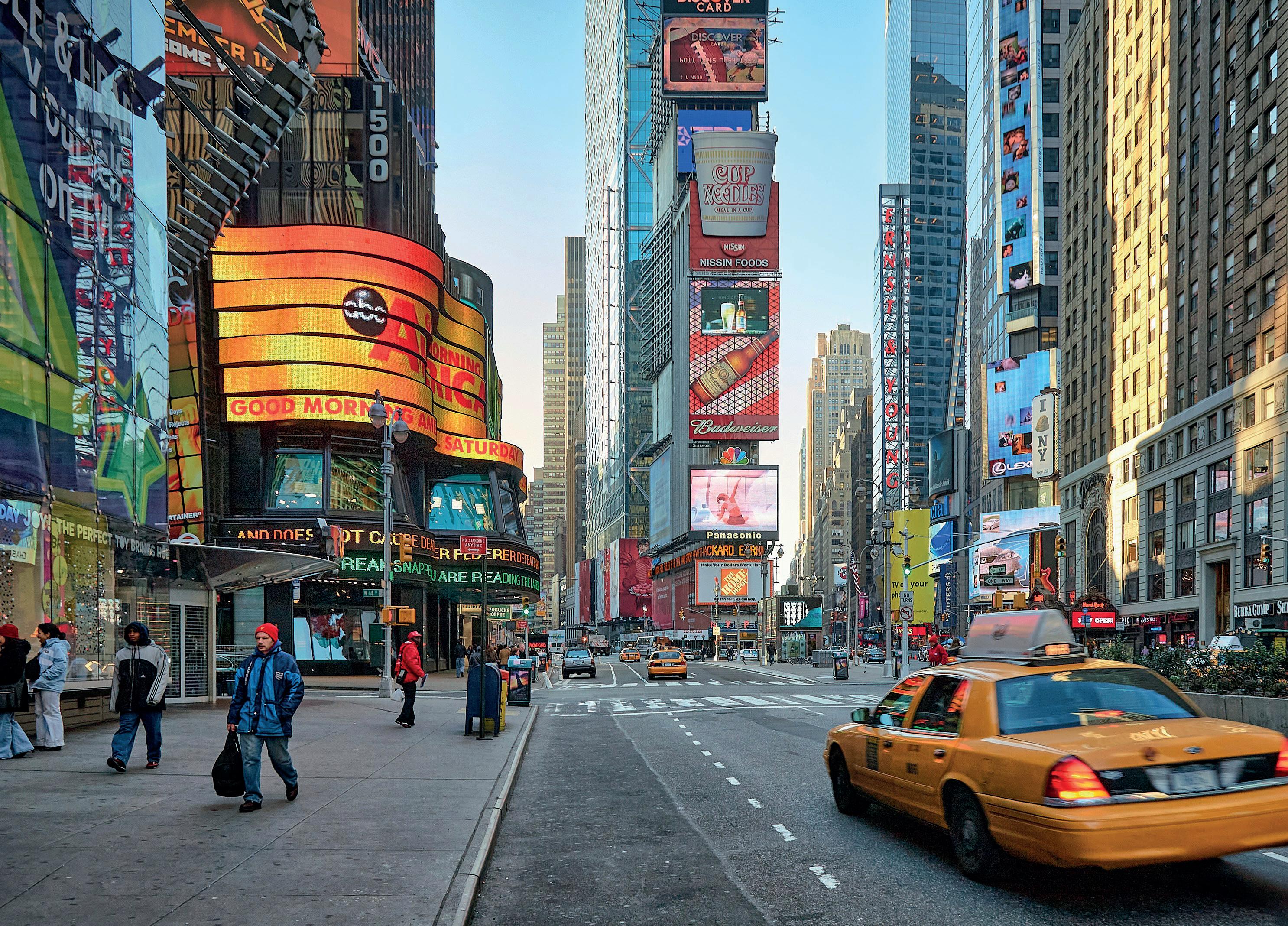
Just as Helen was, I’m here in January, the perks of visiting right now far outweighing the fact it’s on the Arctic side of parky. There are practical gains to be had (shorter queues, for starters) along with bucket-list brags (ice skating in Bryant Park), but above all else it’s the financial wins that seal the deal:
Eighth, I’m sky-high in body only; in purse I’m around $150 a night more in credit than I would be on peak dates.
I’m here in January, the perks of visiting right now far outweighing the fact it’s on the Arctic side of parks. There are practical gains to be had, but also financial wins
2-for-1s on Broadway shows, steals to be had in Restaurant Week and, most significantly, cracking hotel savings. In my 36th-floor room at the fabulously located IntercontinentalTimes-Square, overhanging the crawling yellow dots of cabs on
Look down from any of the famous observation decks atop many of the skyscrapers and you’ll soon see why the city makes a neat and navigable break. Laid out on a numbered grid, just five miles from the nail of Manhattan’s down-pointing finger up to Central Park, and with a subway even this country mouse can get to grips with, it’s viable to cover some ground in just a few days. I invest in a CityPASS that includes access to some of the must-sees (including the Empire State Building, the Guggenheim and the Ellis Island ferry); tour a smattering of Momand-Pop independent stores passed from generation to generation on

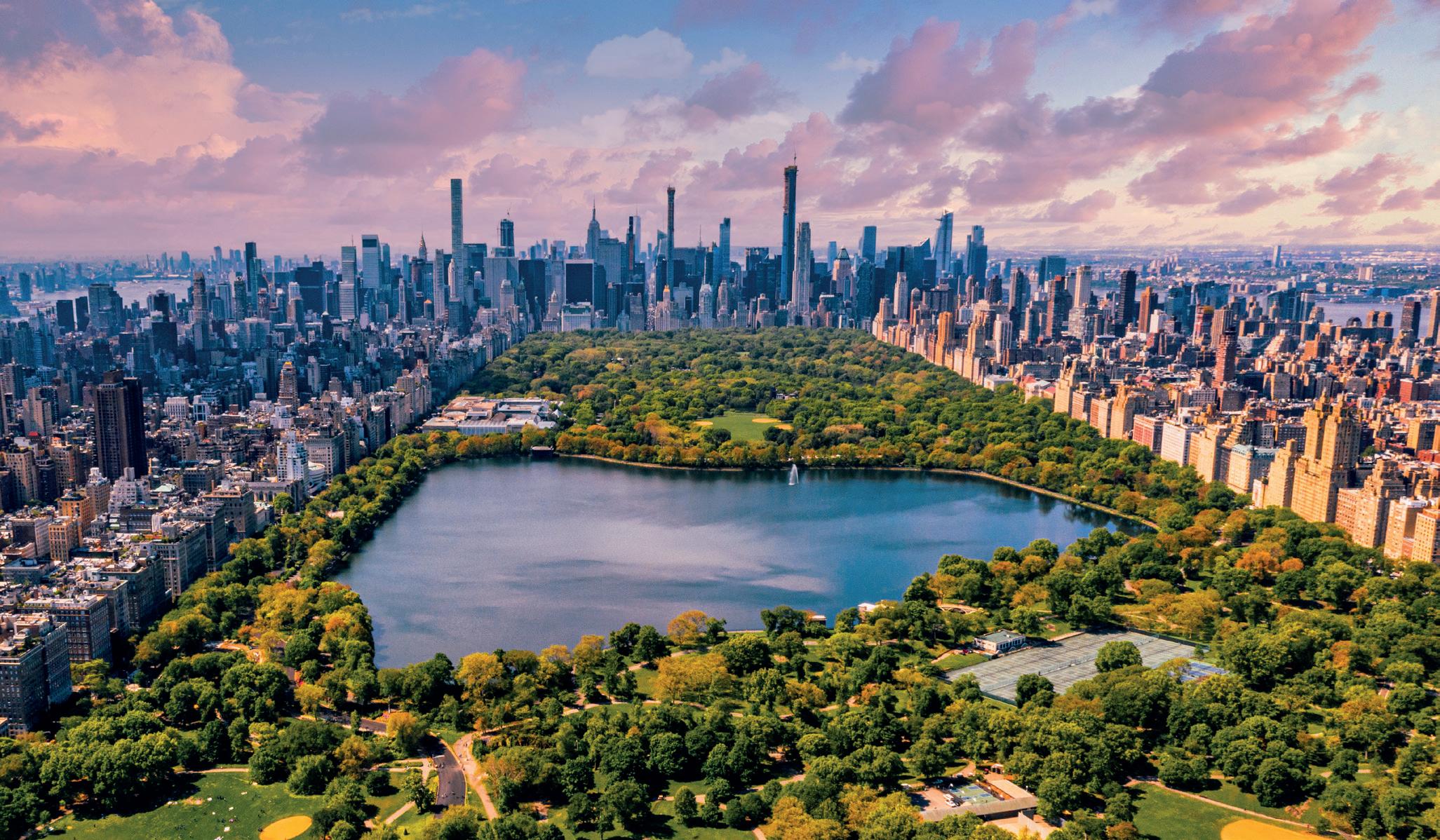

a Little Italy ‘hood tour; and lounge in the winter chalet ambiance of the glamorous InterContinental Barclay (just steps from Grand Central, this 1920s railroad hotel’s Penthouse recently provided the set for Succession). I wrap things up with a three-stop bar hop through Midtown Manhattan, from Rudy’s (think pitchers and free hotdogs in a dive-bar) to Woowoo (think ‘80s tunes in a saucy speakeasy) to Skylark (cocktails with a headyhigh view over the cinematic city).
This all makes it seem pretty inconceivable that only three hours ago, I was immersed in the sensory opposite: the kind of allAmerican tranquil Christmas card scene that elicits wistful sighs with wreath-clad, snow-topped clapboard houses. Welcome to the Catskills – NYC’s nearest upstate mountains – and to the higher peaks of the Adirondacks






to their north, where believe it or not you can ski in the morning and still squeeze in a Broadway show the same day...
The plan to spend a few days touring New York State’s mountains then a few more in the city was the two-centred trip I was after. Not the Vegas or Orlando flight tagon that a quick Google search yielded, but instead a chance, pre-city, to see New York State’s wintry hinterlands by road trip. (They’re also reachable in part by scenic train from NYC’s Penn Station on Amtrak’s Empire or Adirondack service, which deliver you to the hubs of Hudson and Albany-Rensselaer respectively.) With the newly acquired knowledge that New York State has more ski resorts than any other in the US, I first hit the slopes in the Adirondacks’ Gore Mountain resort, hot on the heels of New Yorkers nipping upstate for fixes of powder, piste and




peace. Busy for sure – on account of an extra day’s holiday for Martin Luther King Day – but with four mountain peaks, 108 pistes and 14 lifts there is plenty of the white stuff to go round. Though I’m only a little beyond entry level, in imagination I am steep-slopes high with only a soundtrack of the Chipmunks singing Beyoncé jolting me back to my toddler-trail reality.
Twilight skiing is tempting but instead I’m off to the whimsical and interactive outdoor spectacle that is Lake George’s ‘Winter’s Dream’, where the illusion of stepping into the pages of a kids’ fantasy book provides



There is still time for one last hoorah and snowshoeing at the Windham Mountain Club in the Catskills provides it – a heart-pumping, life-affirming loop of crunch-on-snow
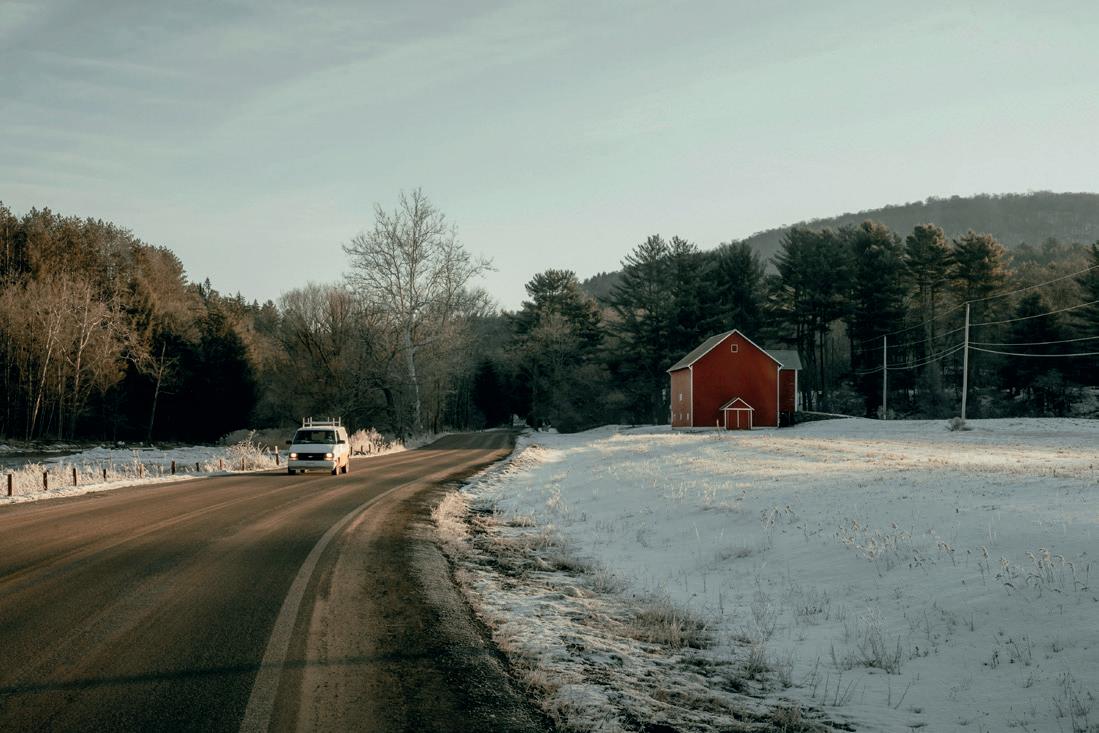
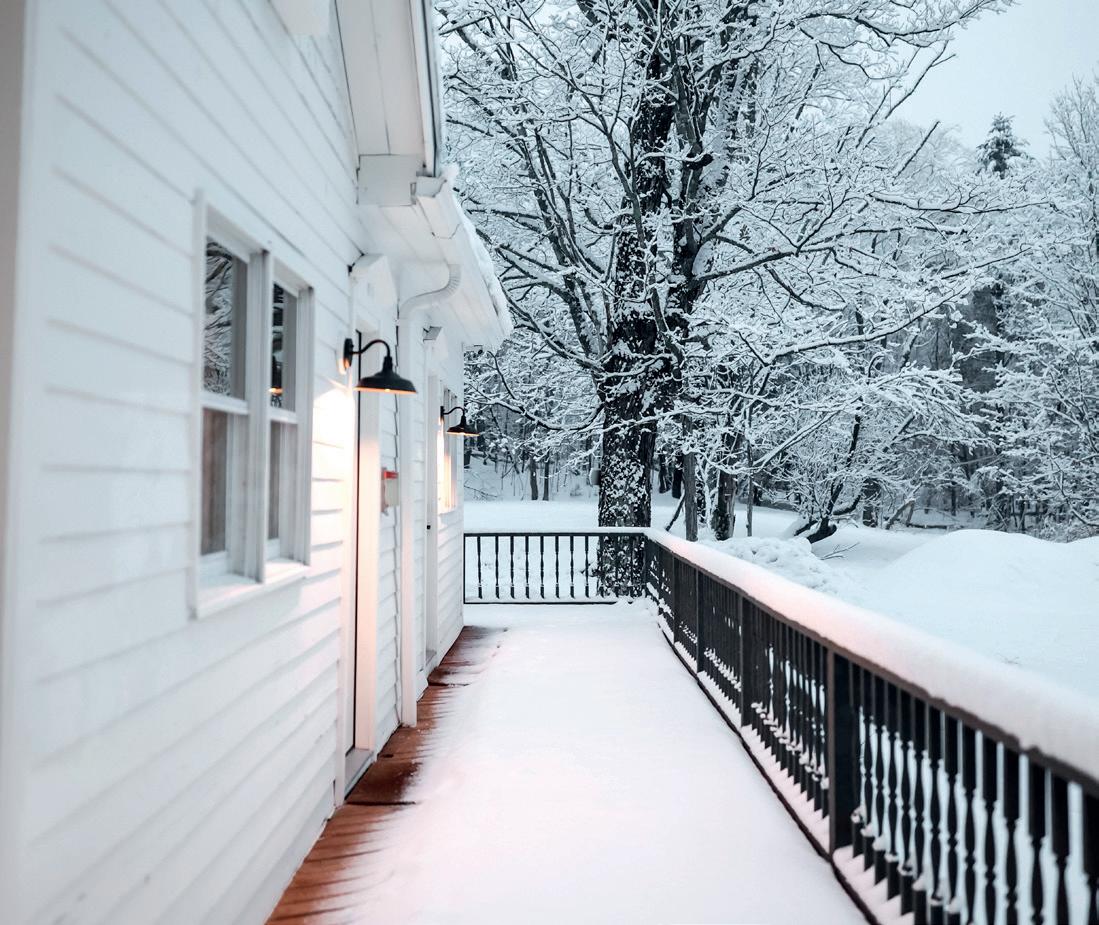
a unique take on winter escapism. Then 10 miles up-lake in Bolton Landing, Buffalo wings and Cape Codder cocktails draw me into the fabulous Gem smokehouse. At the vast and impressive destination hotel the Sagamore Resort, a short walk away and bed for the night, the distinctive sound of country music lures me into its bar. From the stage, lead singer Vinnie’s wholesome, homegrown twangy tones pull firmly on the heartstrings. Come morning, the frost-framed mirror of Lake George – with snowflakes over the warming pool – pulls them some more.
Propelled by a Vinnie-inspired, all-American-
road-trip playlist, there is still time for one last hoorah before the city. Snowshoeing at the Windham Mountain Club in the Catskills provides it – a heart-pumping, life-affirming loop of crunch-on-snow – before dinner at Nat’s in Tannersville and a boutique bed next door at Hotel Lilien. While Nat brings her cool specs, Matisse-esque mural and Greenwich Village vibes to the mountain, Lilien exudes calming mid-century Danish hygge before turning it on its head with a retro jukebox and a DJ dropping in from New York’s Lower East Side. Just goes to show the mountains and Manhattan are closer than you think.
S U S T A I N A B L E C A R I B B E A N
Tourism is one of the Caribbean’s major economic sectors - so much so that in 2022 the WTTC found that, globally, the Caribbean is most reliant on travel and tourism During the pandemic we saw the effects of a decline in tourism when its contribution to GDP dropped a staggering 58%, higher than the global average, and resulted in the loss of 680,000 travel and tourism jobs equating to almost a quarter of all jobs
With tourism such an integral part of the region’s economic stability, it’s essential to protect both the natural resources and the futures of the people in these countries We need to head to their shores and support them, so let us help you make your next trip there as sustainable as possible
READ NOW


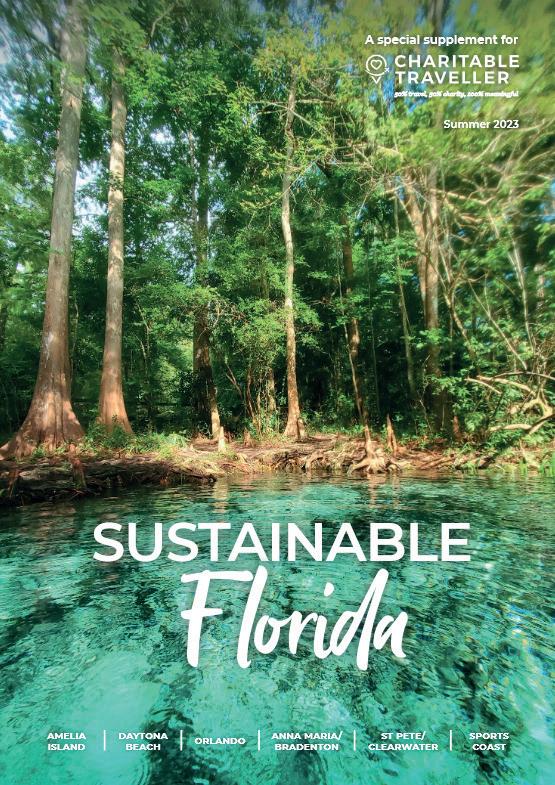
S U S T A I N A B L E F L O R I D A
When talking about sustainable travel and Florida there’s an elephant in the room: the only way for us Brits to reach the State is by aeroplane, and aviation’s impact on the climate is well reported and discussed However, beyond environmental protection, talk around sustainability must also factor in social equity and economic viability Should the restorative joy of travel and the mind-broadening benefits of being exposed to other people, places and cultures, as well as the employment and living standards that are elevated by tourism arrivals globally encourage you to still make that journey, this Sustainable Florida Supplement is here to help you consider how to make your next trip to the Sunshine State as sustainable as it can be.
READ NOW


AT SUSTAINABLE JOURNEYS, WE AIM TO OFFER UNFORGETTA BLE TRAVEL EXPERIENCES THAT NOT ONLY SHOWCASE THE BEAUTY AND D IVERSITY OF OUR PLANET BUT ALSO SUPPORT THE WELL-BEING OF LOCAL COM MUNITIES AND THE PRESERVATION OF NATURAL AND CULTURAL HERITAGE.
WE ARE COMMITTED TO ALIGNING OUR PRACTICES AS CLOSE LY AS POSSIBLE WITH THE UNITED NATIONS WORLD TOURISM ORGANIZATION’ S DEFINITION OF SUSTAINABLE TOURISM, WHICH EMPHASISES ENVIRONMENTAL CONSERVATION, SOCIAL INCLUSIVITY, AND ECONOMIC SUSTAINABILITY.
WWW.SUSTAINABLEJOURNEYS.CO.UK




If you haven’t visited Venice before, the tales of overcrowding can be a little off-putting. But the city is popular for a reason (the way its Renaissance and Gothic architecture seems to balance on water, for starters), so choose to visit it at a quieter time of year (October to May) and you’ll see it in its full glory.
While of course visitors must see St Mark’s Square (climbing the Campanile bell tower to view the city’s red roofs), St Mark’s Basilica and the Rialto Bridge, one of the real highlights of Venice is simply ambling from Venetian tapas bar to tapas bar, grazing on crostini, sarde and plenty of spritz.
But what many visitors to Venice don’t realise is
how easy it is to reach the floating city by train. Hop on a Eurostar train from London to Paris, then change for a train through to Turin. Spend the night in this unexpected gem of a city before continuing onwards to Venice the next day.
If that sounds appealing, why not consider extending your trip to take in Rome by train too? From Turin, it’s just under five hours to the centre of Rome, where again, this city comes into its own in the quieter, cooler months of winter. Take in the Colosseum, the Sistine Chapel and centuries of rich history before taking the train on to Venice, just under four hours away.

Sweeping along North America’s East Coast for a dazzling 35 miles, Virginia Beach’s wide buttery sands and seaside-y vibe is the epitome of the all-American beach resort. Often considered the birthplace of the United States as we know it, the first Europeans landed at Cape Henry in 1607 before scuttling over to Jamestown to settle. In its blessed position, where Chesapeake Bay meets the Atlantic Ocean, it’s as popular with dolphins and humpback whales as it is with surfers and spring breakers who all flock to its shores for its sunny beach vibes.


A salt-tinged seaside resort at heart, Virginia Beach Boardwalk is the cotton candy-scented heart of the city. Built in 1888, the three-mile long boardwalk is now home to a raft of pastel-hued ocean hotels, seafood diners and buzzy beach bars. King Neptune, a 24ft high bronze statue, commands the ocean from the boardwalk, which is alive with music, street theatre and artists all summer. Cycling, rollerblading and leisurely strolling are the main forms of ambulation, although vintage trolleys run along Atlantic Avenue and the Bay between May and September.


As blissfully blonde beaches lapped by a consistent surf are the main draw to VB, it’s important to enjoy the ocean responsibly, so ditch the jet skis and speedboats and opt for paddle power instead. Dolphins adore the waters around Virginia Beach and are frequently spotted close to the coast during dawn and dusk. Head to First Landing State Park and the Rudee Inlet and hop on a guided kayaking or stand up paddle-boarding dolphin-watching tour. Come winter, Chesapeake Bay becomes a playground for juvenile humpback whales who flock for the fishes.

LOVED BY QUEEN VICTORIA
Also called America’s First Oyster, the plump, saliferous molluscs were a favourite of Queen Victoria, who named them Lynnhaven Fancies.
Captain Chris Ludford offers boat tours of his Pleasure House oyster farm, where you can pluck and eat the freshest Lynnhaven Fancies with your toes in the water.
Such is the love for these little molluscs, they even have a dedicated trail. The Virginia Oyster Trail includes a map of farm tours and tastings, to ‘merroir-terroir’ dining experiences, which pair oysters with home-grown regional produce.
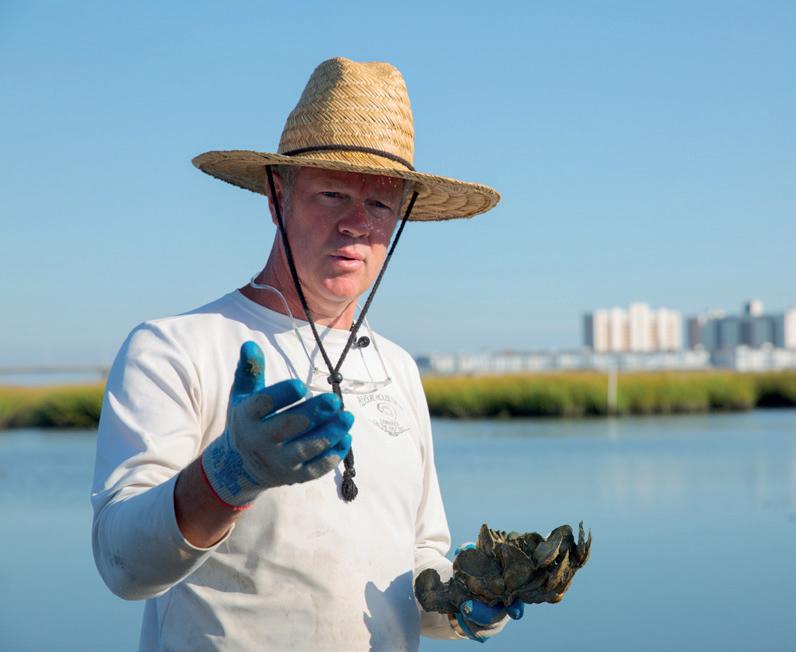

Ice cream and saltwater taffy aside, Virginia Beach is all about sparklingly fresh seafood. A bastion of farmto-table and tide-to-table dining, restaurants like Commune and Catch 31 are all about local, sustainably sourced produce. Virginia Aquarium’s Marine Science Centre leads VB’s Sensible Seafood Programme, which promotes ocean-friendly seafood and encourages choosing locally caught varieties such as striped bass, flounder and sea trout.



Virginia Beach has a unique approach to managing waste – turn it into a leisure park. Mount Trashmore is an excellent example of landfill reuse. Made from compacted layers of solid waste and topped with clean soil and turf, this huge man-made mountain with walking trails, a skate park and a fishing lake has become a symbol of environmental awareness and is one of Virginia Beach’s biggest attractions.
Stretching for nearly 18 miles, the Chesapeake Bay Bridge Tunnel connects Virginia Beach with the Eastern Shore and is considered one of the Seven Engineering Wonders of the Modern World
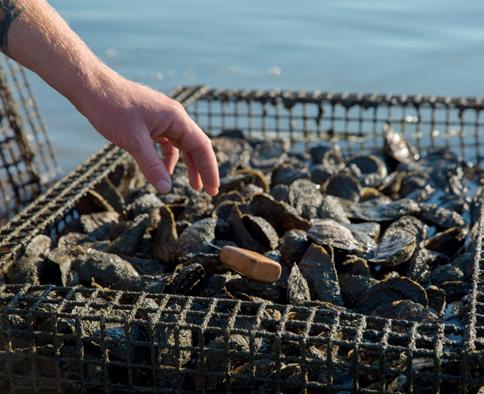

Aside from its seemingly endless sands and navy ocean, Virginia Beach runs the full gamut of coastal dunes, maritime forests and wetlands, all of which are a haven for the finned and feathered. There are numerous conservation programmes in place to protect local wildlife and their habitats, and one of the best is Back Bay National Wildlife Refuge. Situated southeast of the city, its diverse ecosystems, including marshland and forest, attract such birds as American bald eagles, piping plovers and peregrine falcons.
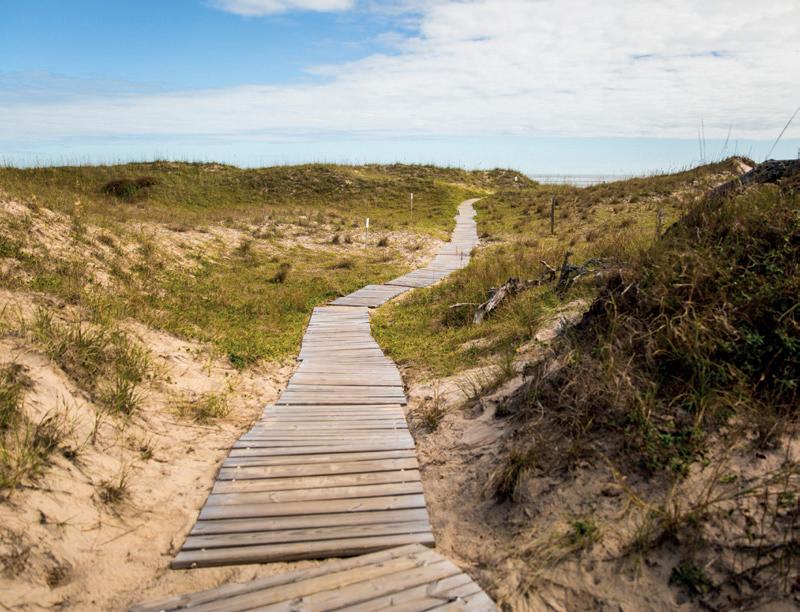
SPECTACULAR DIVING

Often overlooked for its higher profile neighbours, this Southeast Asian country has so much to see
Home to so many protected marine parks and coral reefs, the seas running along the east coast of the Malay Peninsula and the north of Borneo are a feast for divers. Whether you choose to simply snorkel or go deeper and Scuba, the underwater world is home to everything from parrotfish and clown triggerfish to unicornfish, porcupine pufferfish and scorpionfish, as well as giant moray eels, turtles and hammerhead sharks.

ENDLESS BEACHES Thanks to its 3,000 miles of coastline, tropical beaches are two a penny in Malaysia, but some of the best are found in the Seribuat archipelago off the east coast of the Johor region. Largely protected by the Sultan Iskandar Marine Park, expect coral islands, pristine beaches and traditional fishing communities.
Supporting children and young people with disabilities and autism to live more independent, fulfilling lives since 1992.
The impact of the mobility equipment provided by AFK on Ella and Elsa, who both navigate the challenges of cerebral palsy, has been nothing short of transformative.

With the newfound freedom of their trikes, the sisters have not only strengthened their legs but have joyfully embraced the thrill of exploration. The equipment has not only facilitated physical development but has also become a catalyst for family bonding.
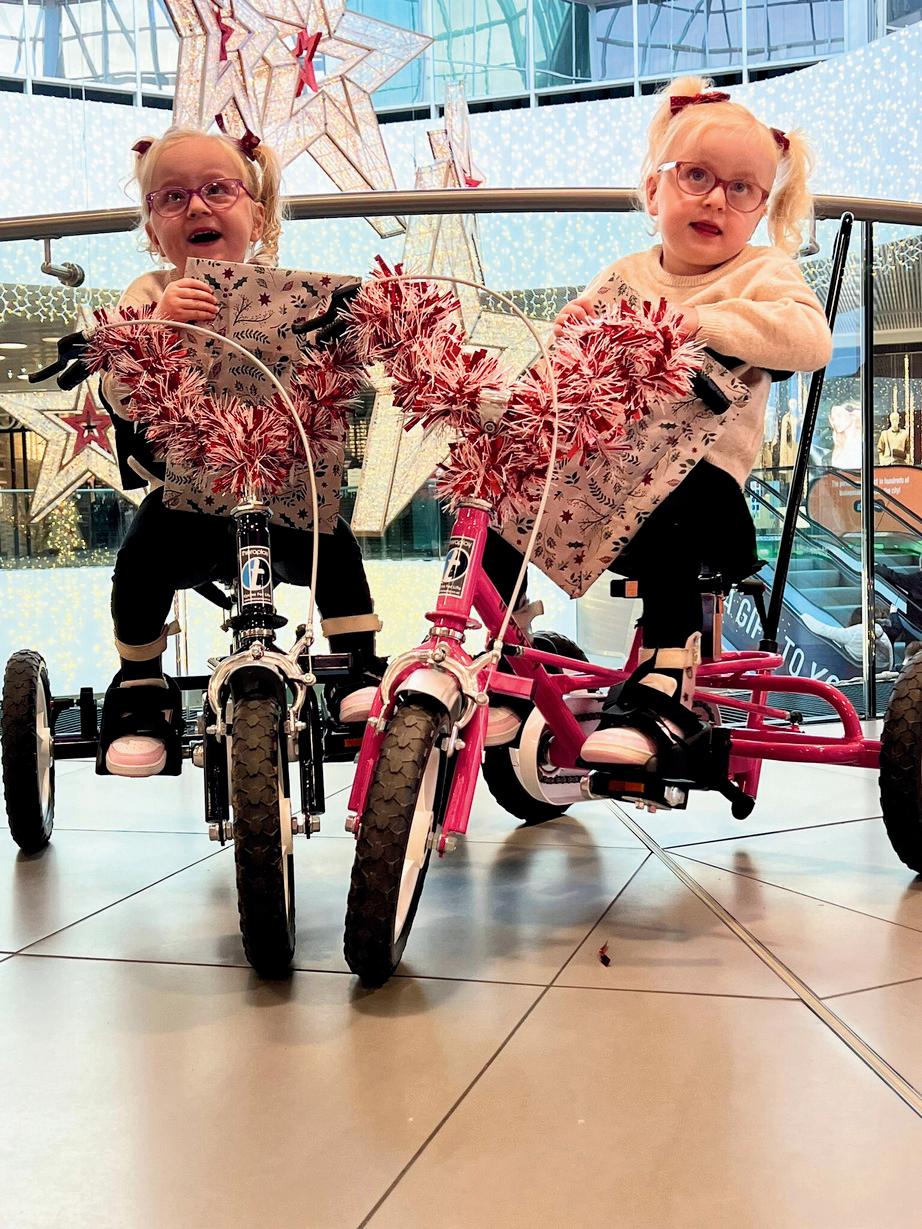
Riding alongside their big sister, Eva, on bike adventures has not only brought immense joy to Ella and Elsa but has enriched the entire family's outings. The trikes serve as more than just tools for mobility; they symbolise a gateway to shared experiences, making family moments more enjoyable and inclusive.

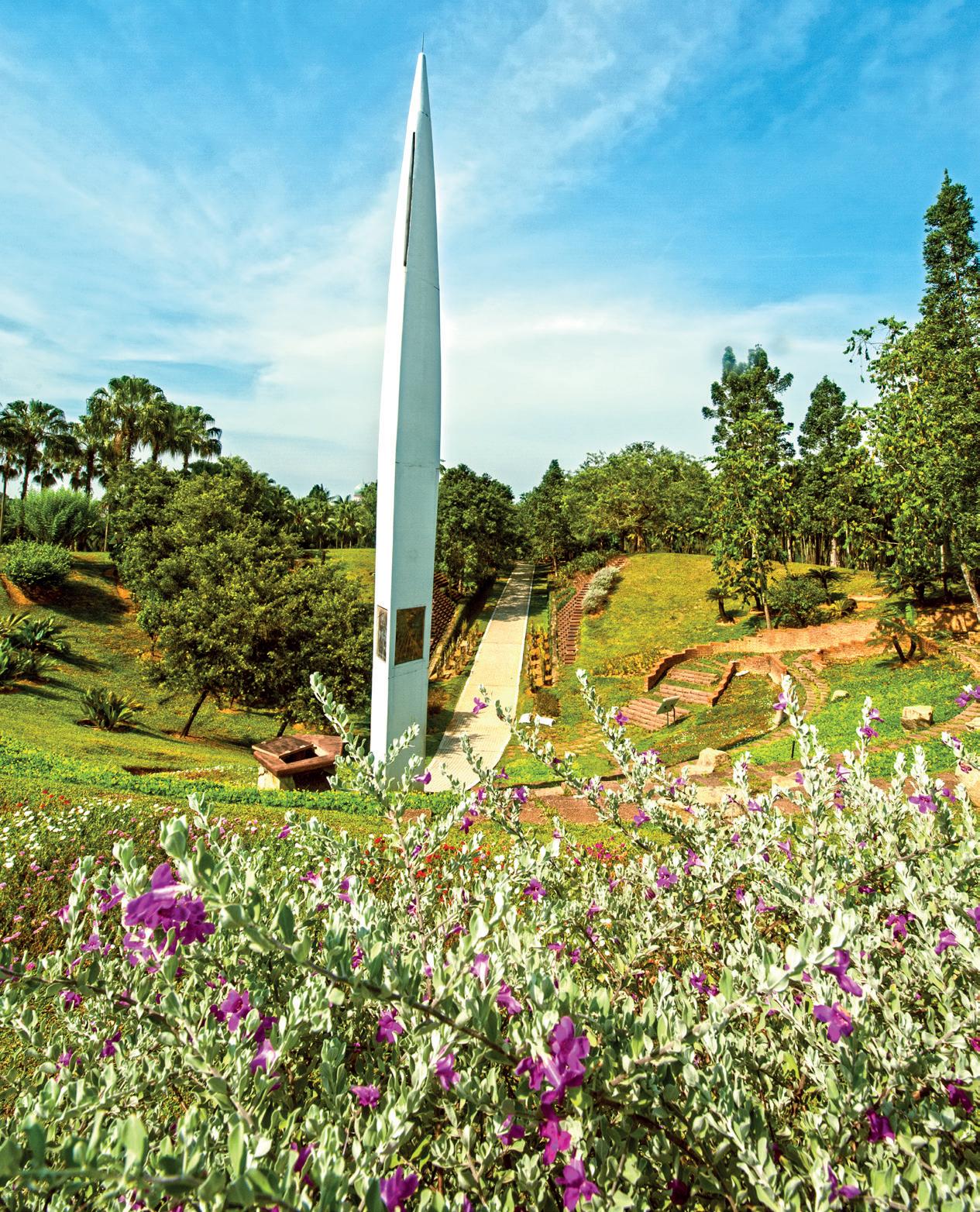




With so much incredible biodiversity to explore across South and Central America, choose wisely when deciding where to stay and pick one of these places that supports not just the flora and fauna but the local communities too, says Rebecca Miles
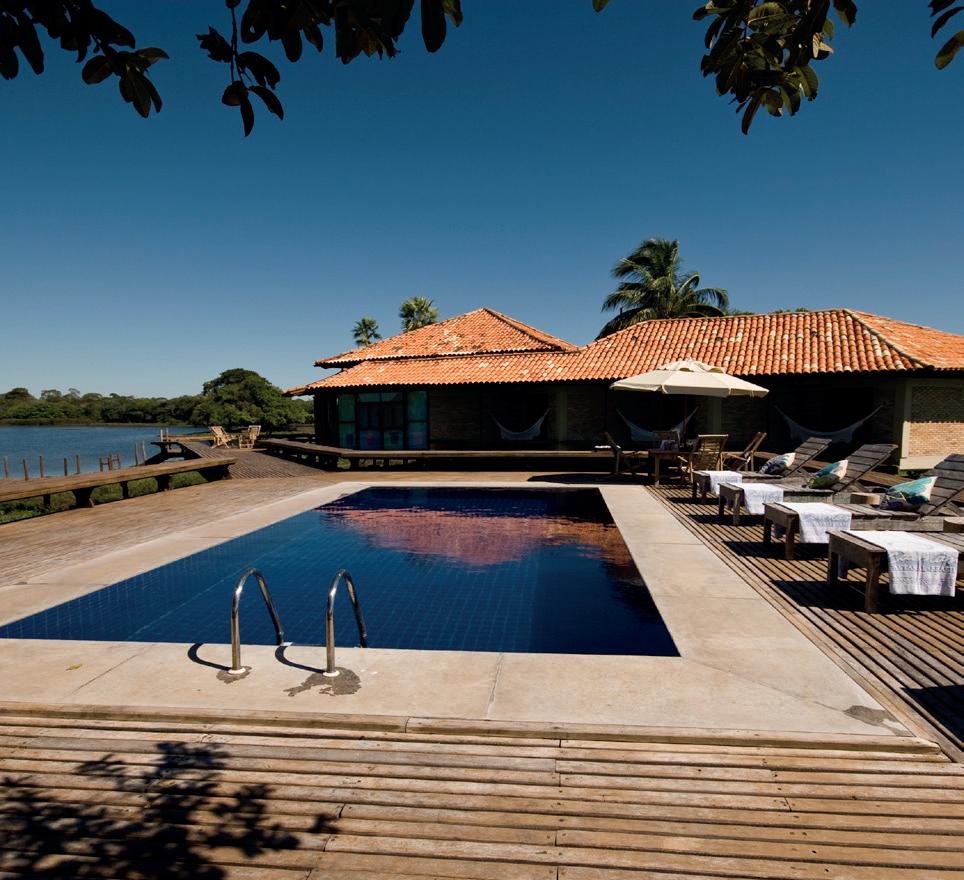
So much more than ‘just’ a hotel, Caiman is a 204-square-mile refuge in the vast Pantanal, the world’s largest tropical wetland. The ecological refuge is home to countless wild species as well as two boutique lodges, operating independently from each other to maximise wildlife-viewing opportunities, and combines first-class accommodation with conservation, animal husbandry and community support. Guests can enjoy excursions in the biome – by canoe, horseback or 4x4 – and contribute directly to the conservation of jaguars, blue fronted parrots and hyacinth macaws, among many others.
A ecolodge overlooking the striking blue waters of Lake General Carrera, Mallín Colorado Ecolodge is run by seven brothers and sisters and is surrounded by wooded trails, pristine meadow and native forest, while in the distance are Patagonia’s Northern ice fields. Around four to five hours south of Coyhaique – down Chile’s epic Route 7 – it sleeps just 32 people in four comfortable cabins and six rooms set around the main Club House. Patagonian lamb is cooked on the quincho (barbeque) and arriving here feels like you’ve reached the end of the world.


Benefiting both the local community and also the native and diverse flora and fauna, the Napo Wildlife Lodge is managed and owned by the indigenous Kickwa Añangu people, and conserves over 82 square miles of pristine Amazon rainforest within the Yasunì Nation Park. It’s part of the largest tract of rainforest in Ecuador, and visitors who book a stay in one of its red-thatched cabins can learn about the community traditions as well as explore the Añangu Lake and the Napo River, spotting caimans, turtles, piranhas and giant otters, plus over 600 species of birds.
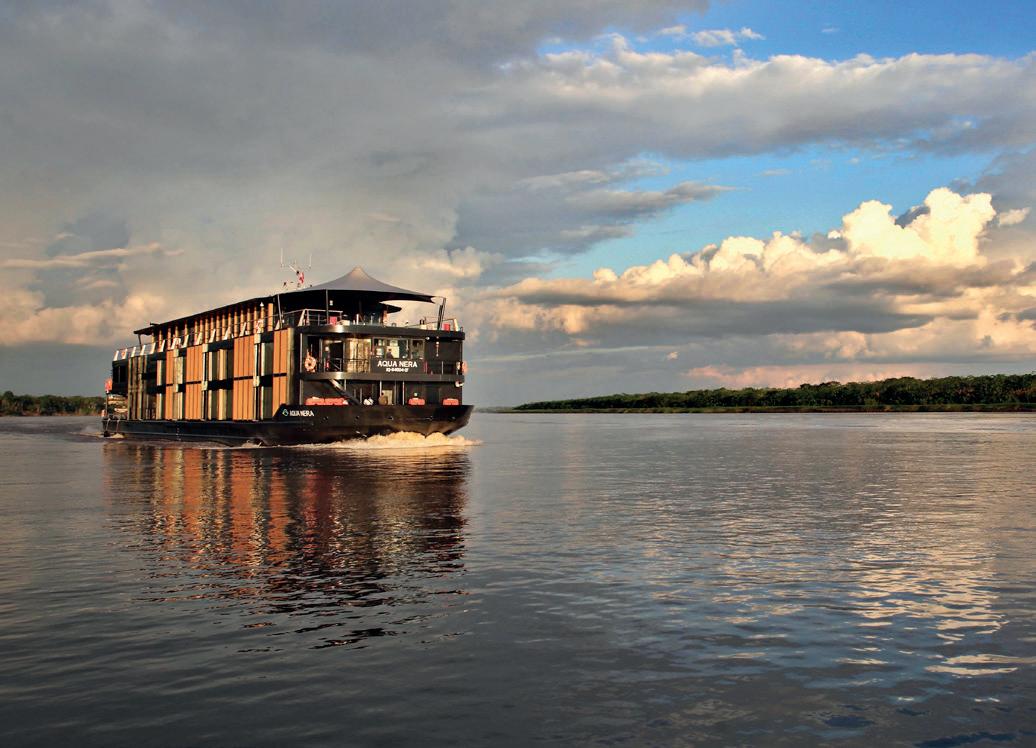
An award-winning indigenous community ecotourism enterprise in Ecuador’s Amazon rainforest, Kapawi is a tranquil retreat not far from the Peruvian border. Catering to adventurous, conscientious travellers, it’s owned and operated by the indigenous Achauar Nation and is properly remote. Featuring 10 simple but stylish bungalows set among the rainforest, they were built with recycled materials from previous structures and are designed to withstand decay in the rainforest ecosystem.
Supporting
communities a year in the Peruvian Amazon, Aqua Nera, a 205-foot river cruiser operated by Aqua Expeditions, connects its guests with nature in a remarkable yet responsible way. Actively educating guests, crew and
preserving the surrounding fragile ecosystem, ultrapersonal excursions into the Amazon’s mystical black water lagoons and the Pacaya-Simiria National Reserve, are led by native naturalist guides while the food on board is inspired by the vivid flavours of the rainforest.















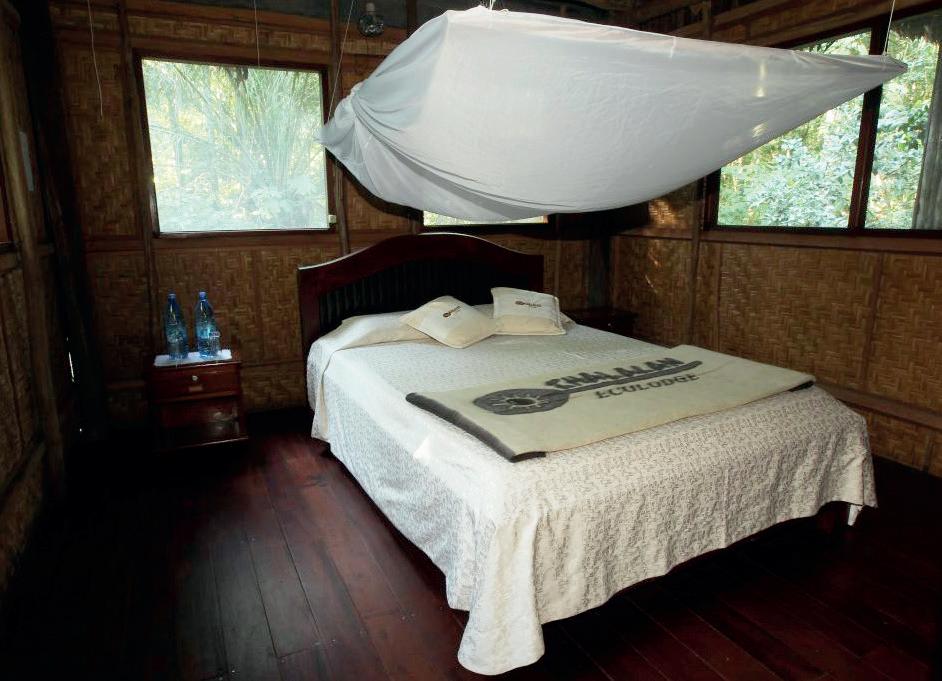
Whatever you choose to do at Tierra Atacama, the local guides are exceptional. Pick from walking into the Atacama, Earth’s driest desert, or hiking through the surreal rock formations in Moon Valley, joining an excursion to the sometimes-smoking Licancabur Volcano or a horseback ride into the Rio Grande to visit small traditional villages and river gorges. The eco ethos doesn’t stop there – most of the hotel’s food is grown on site, and its daily energy demand is met by its own solar-powered hybrid system, one of the first in South America.

Just 50km from Rio de Janeiro is Sinal do Vale, an education centre and retreat of eight houses sleeping up to 50, sat in Brazil’s lush Atlantic Rainforest. On its doorstep is one of the world’s most diverse and threatened biomes and Sinal has achieved tangible social and environmental change since it was founded in 2012 by Thais Corral, a renowned social innovator. For example, Sinal develops ecological food systems and eco-building techniques in its organic gardens and bioconstruction projects, then shares its innovations with the local and international community.
Set in the middle of the Madidi National Park in the upper Amazon’s river basin in Bolivia, the Chalalan Ecolodge is a leading light in responsible tourism and is an indigenous community committed to developing ecotourism. Using extremely knowledgeable native bilingual guides, guests get to know the rainforest’s natural history and can explore the surrounding 50km of interpretation trails, as well as Lake Chalalan – famed as the most beautiful in Bolivia – before returning to base and the lodge’s carefully crafted cabins.
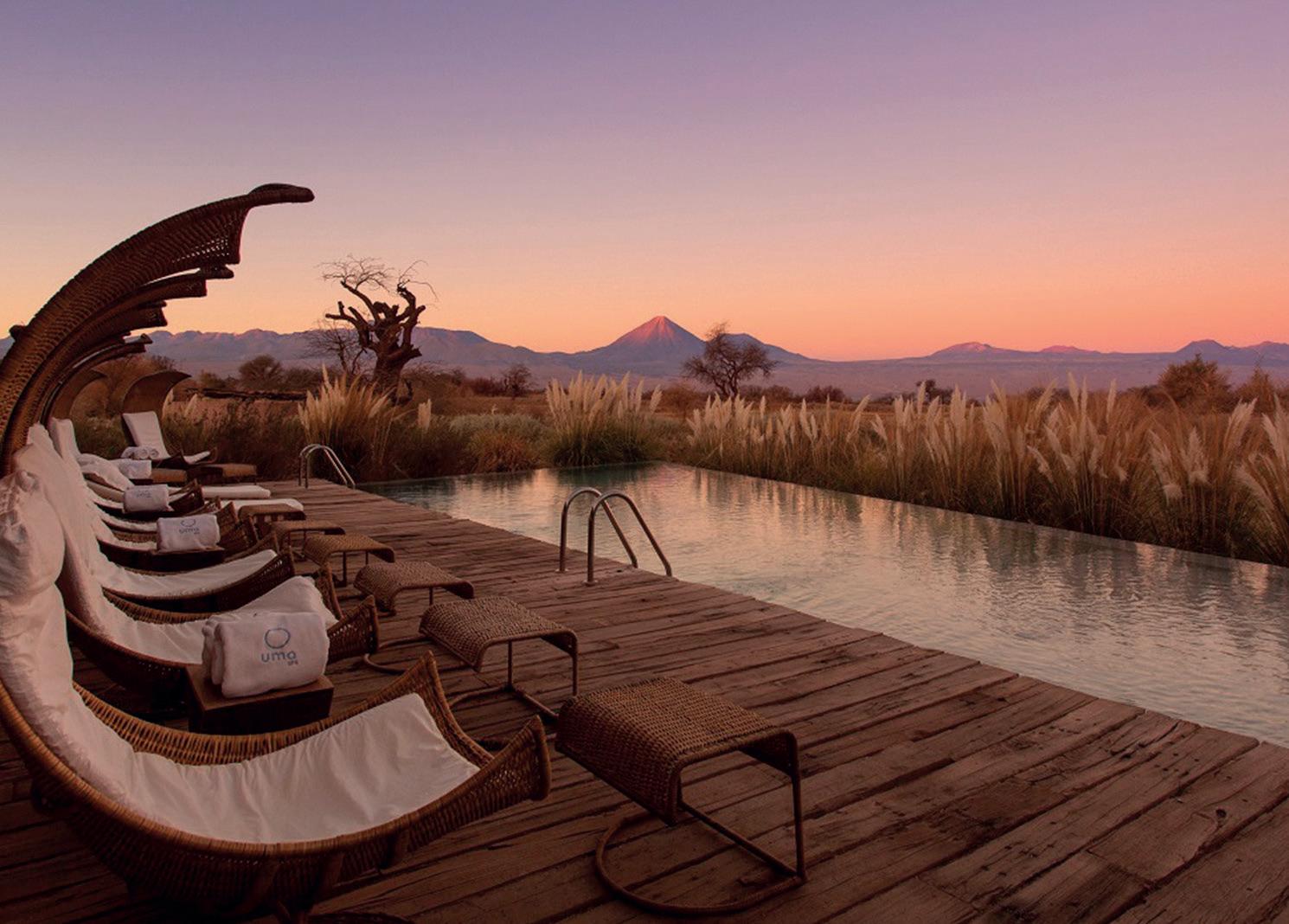
Bursting with biodiversity, the Indio Maiz Biosphere Reserve buffer zone in the south of Nicaragua is where you’ll find pumas, pacas, sloths, jaguars and hundreds of birds, and is where the Guacimo Ecolodge calls home. Accessible only by the San Juan River and with just six bungalows running solely on renewable energy, it’s the very opposite of mass tourism. Working with a team of local biologists to monitor the local flora and fauna, Guacimo Ecolodge provides guests with an insight into one of the best protected lowland tropical rainforests in Central America.
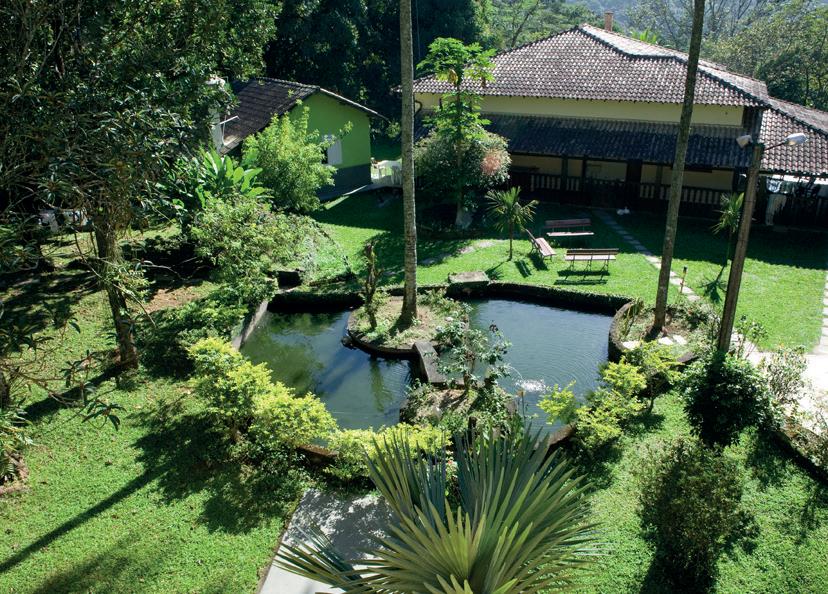
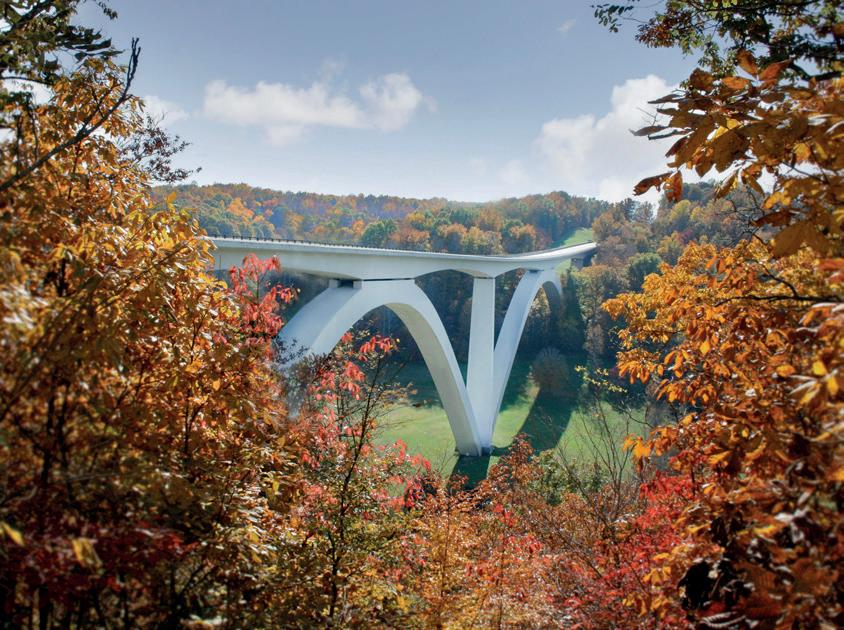


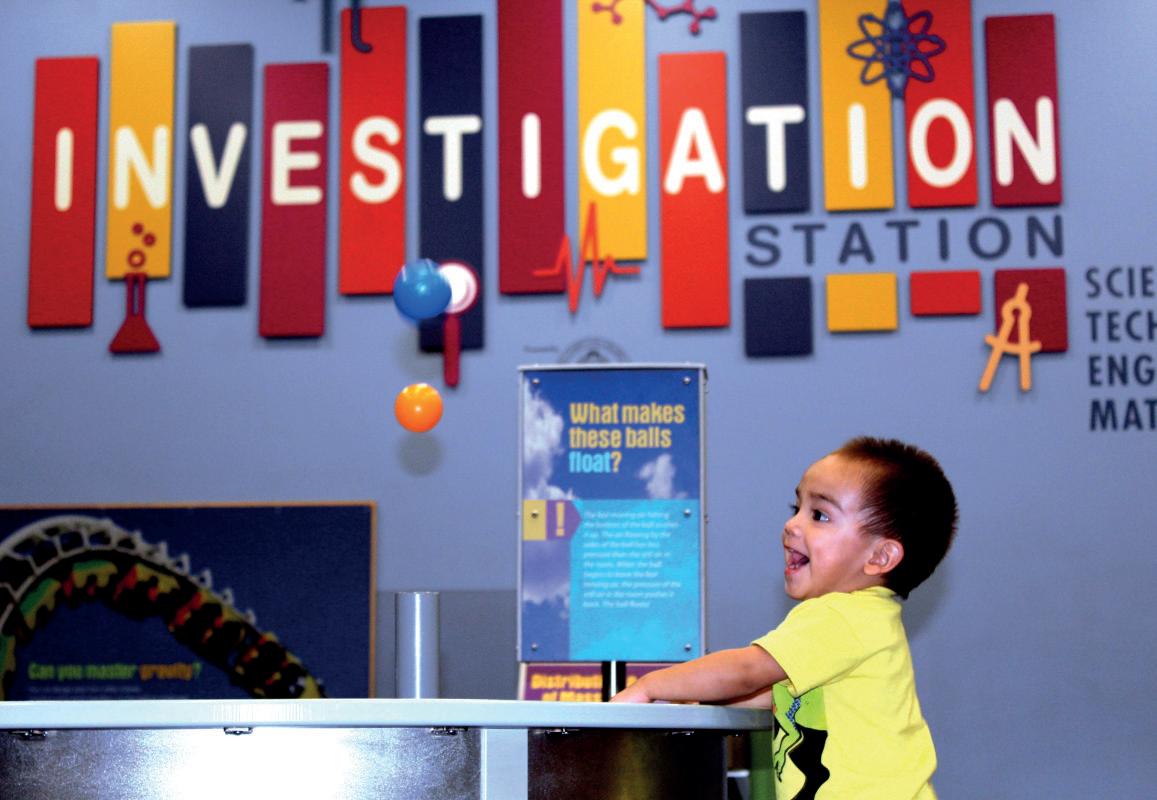
From the world’s first official Autism City to a theme park that is accessible to all needs, resorts and cities across the States are ensuring everyone is welcome
In a world where travel is often synonymous with adventure, destinations across the United States are redefining the narrative by prioritising accessible tourism, ensuring that adventures are inclusive for all.
San Antonio, Texas, is home to Morgan’s Wonderland, a pioneering ‘ultra-accessible’ theme park and universal playground. Born from a father’s love for his daughter, this 25-acre wonderland is a testament to inclusivity and is fully wheelchairaccessible. It features all kinds of theme park attractions, a Ferris wheel, and even a water splash park. This year, Morgan’s Wonderland is set to expand its existing 25-acre site, and will be opening new rides and a 4D cinema too. The park’s success has caught Hollywood’s eye – a film is due to be made telling the story of the family’s challenges in raising a child with special needs and how that sparked their determination to create Morgan’s
Wonderland as a beacon of joy for people of all abilities.
Holding the accolade of being the first autism-certified city in the U.S., Mesa in Arizona is fully committed to providing a welcoming environment for neurodivergent people. To earn this accolade, at least 80 per cent of guest- or public-facing staff (from healthcare professionals to hospitality staff) are trained in understanding autism and other neurodivergent needs, and so are certified to provide a better service. Recognised as one of the most family-friendly cities in the US. Mesa’s hotels and attractions are rolling out the red carpet and offer a full-sensory experience for everyone.
In Tennessee, which is known for its vivid autumnal scenes as the leaves on the trees change colour, colourblind visitors can enjoy the views too, thanks to the specially developed Viewfinders for the
Book your accessible holiday at charitable.travel
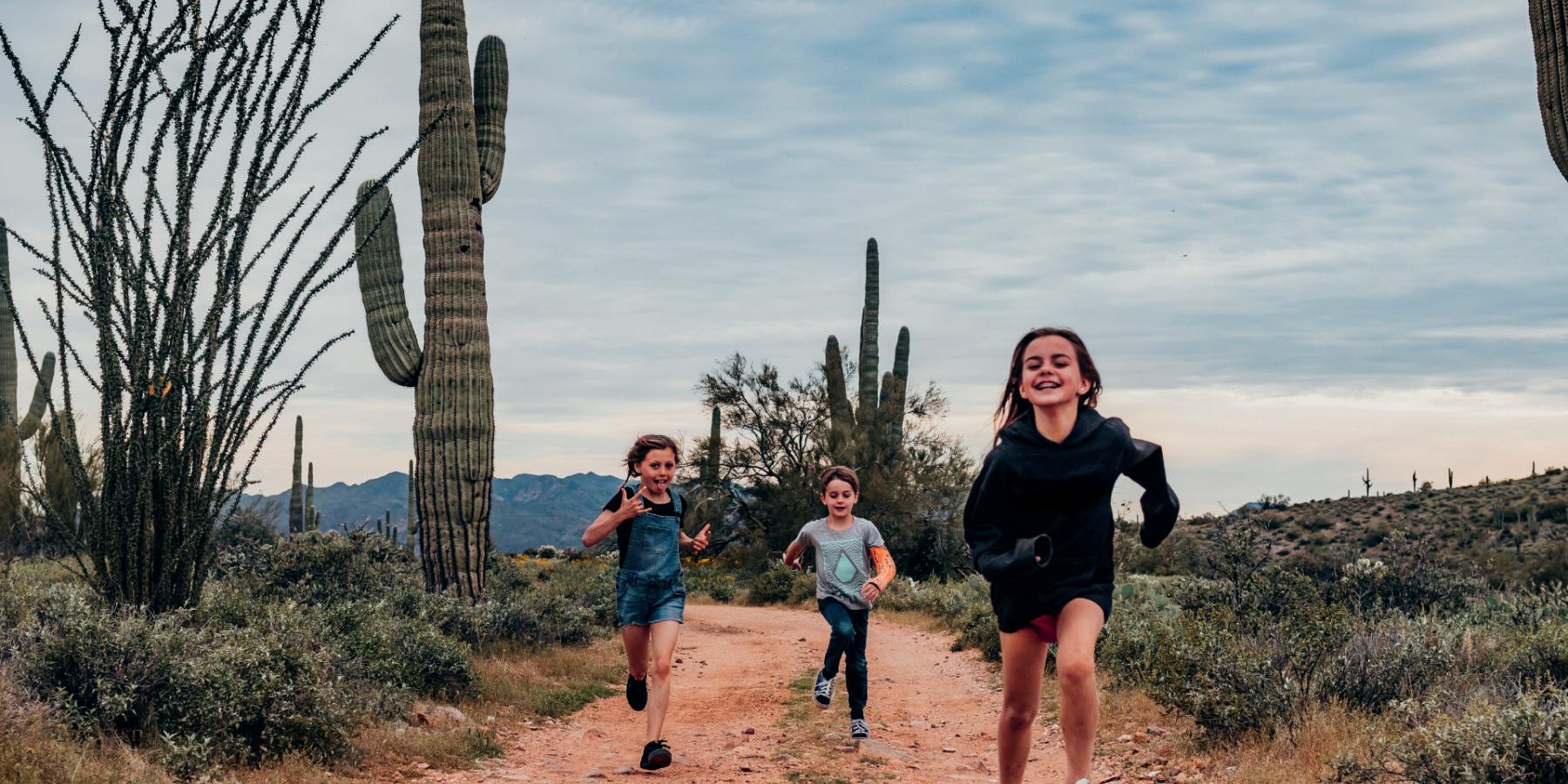
Colourblind. The world’s first scenic viewers designed to help people with red-green colour deficiency, allow everyone to enjoy the fullness of the state’s landscapes, scenic views and fall colours.
For anyone visiting New Orleans with additional needs, the city provides an Accessibility Guide to help navigate
Louisiana has 22 state parks, which were all designed with accessibility in mind and have plenty of paved trails and boardwalks..
A great playground for skiers and sporty people, there are a couple of organisations helping to empower people of all abilities to access activities. In Vermont, the Vermont Adaptive organisation has a year-
At least 80 per cent of guest- or public-facing staff in Mesa are trained in understanding autism and other neurodivergent needs
its various sights and sounds, including details of how to get around on the public transport system, the accessibility options at museums and attractions, and advice on how to make the most of the city if you are blind, deaf-blind or have low vision.
Outside the city and across the state,
round programme of courses, activities and lessons, while in Maine, Maine Adaptive was founded in 1982 and provides 3,500 lessons a year for adults and children with disabilities.
For a bird’s eye view, Maverick
Helicopters – operating in Las Vegas, Grand Canyon, California and Maui – offers Americans with Disabilities Act-compliant tours for sky-high accessibility. Employing the highest qualified pilots in the industry, Maverick’s choppers can accommodate wheelchair users, ensuring that the breathtaking landscapes of America are accessible, even from the skies.
Two attractions in particular in and around Tucson are making the effort to increase their accessibility. The first is the visitor centre at the Saguaro National Park, just outside the city, where improvements have been made to welcome people of all abilities and mobilities. The second is the Children’s Museum Tucson, which is entirely accessible by wheelchair, and accessibility has been built into the exhibits. The museum also offers programming for families with children with autism, low-sensory needs and disabilities to provide a welcoming environment for all.

1
WORLD VILLAGES FOR CHILDREN Working towards ending poverty through education, World Villages for Children addresses social inequalities and injustice by working towards ending poverty through education and improving the lives of the world’s most impoverished children and communities. The charity supports the humanitarian education programmes of the Sisters of Mary, which has established schools in The Philippines, Mexico, Honduras, Guatemala, Brazil and Tanzania for vulnerable children. Read more about World Villages for Children’s work in ‘A Day in the Life…’ on p59. charitable. travel/world-villages-for-children
2
HOPE FOR CHILDREN
Currently focusing on five countries –Uganda, Kenya, the UK, Sri Lanka and India – Hope for Children creates opportunities for vulnerable and exploited children living in extreme poverty, and believes every child has the right to a happy, healthy and positive childhood. Believing that the best place for a child to grow up is within its loving family, the charity supports income-generation schemes for parents so children have a stable economic future. charitable. travel/hope-for-children/
Tanzania is a beautiful country offering the very best safaris and beach holidays. However, it is impossible to ignore the poverty and deprivation suffered by the most vulnerable in society - the children.
You can help provide
safe shelter clothing care
food academic education vocational training for Tanzania’s poorest boys and girls at World Villages for Children’s humanitarian education programmes in Dar es Salaam and Dodoma.
Give children from Tanzania’s poorest communities a poverty-free future

3
BOOK AID
INTERNATIONAL
Wanting to reach as many readers as possible who are facing marginalisation and discrimination, Book Aid International supports volunteerrun community libraries in rural, remote villages throughout Africa. These libraries provide a lifeline for the many women and girls who face barriers to accessing books, and for all people to benefit from the information and inspiration books provide in building a more equal future. charitable.travel/book-aid

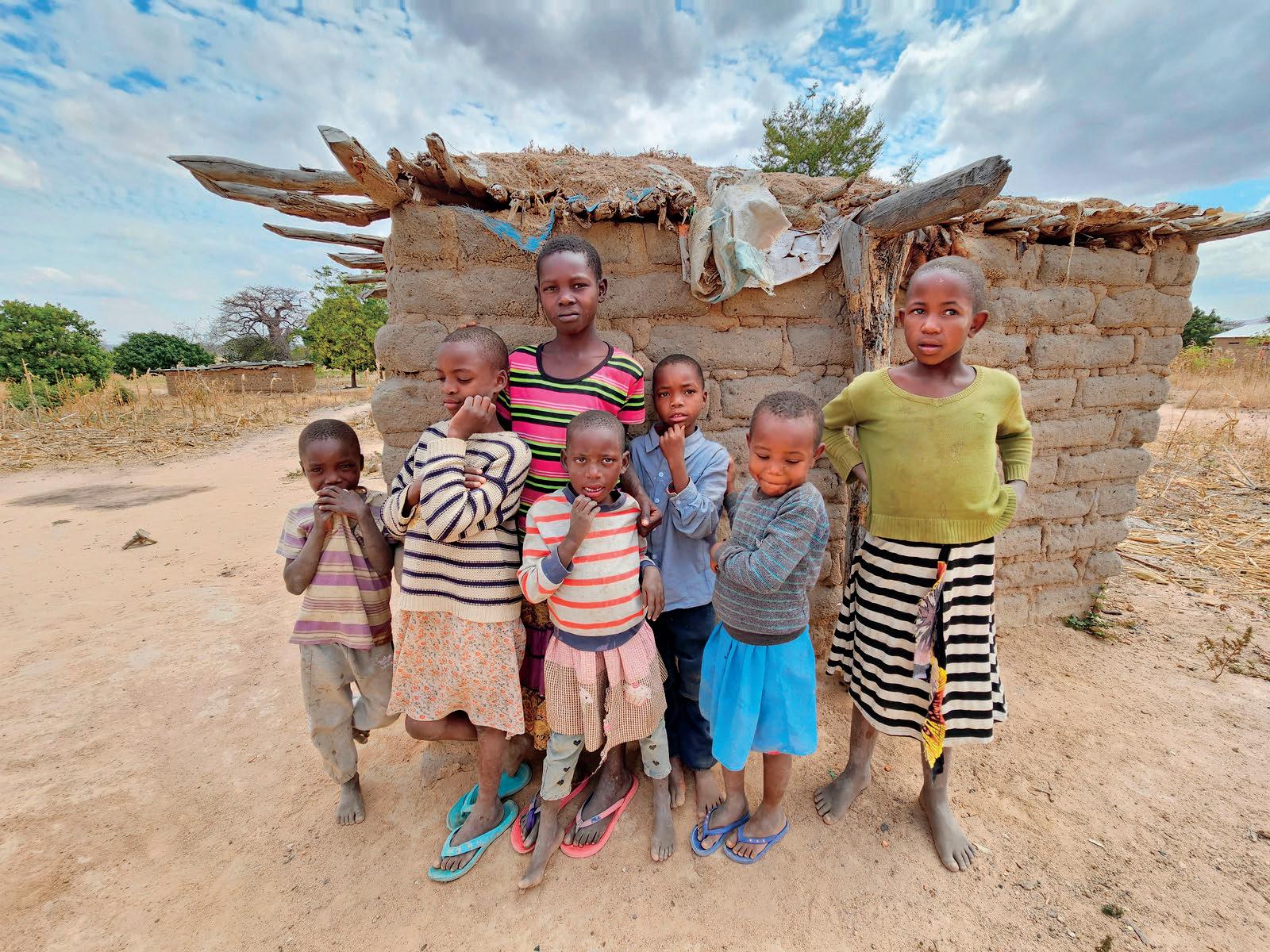
charitable.travel/world-villages-for-children/
World Villages for Children works with the Sisters of Mary to provide free quality education & care for the world’s poorest children in 6 countries worldwide.

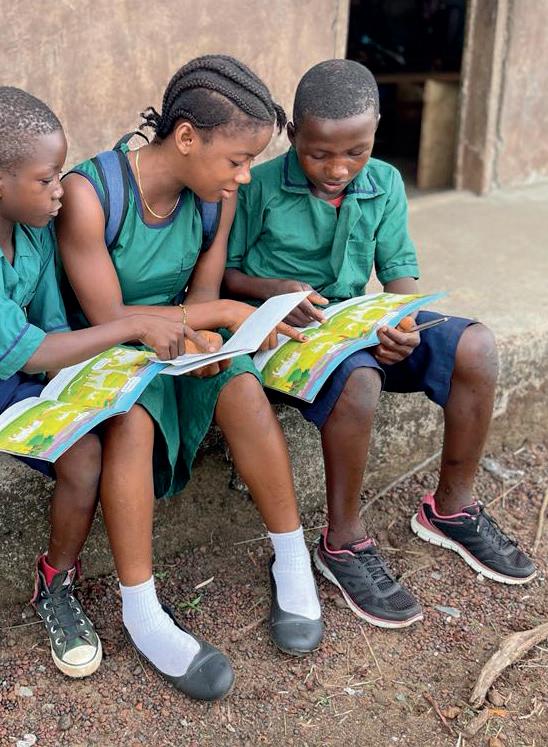
4
Find
MONDO FOUNDATION Mondo works in Nepal, Tanzania and India with people who face extraordinary challenges and no simple answers. Partnering with organisations on the ground, the charity provides access to quality education and small business support (with grants and training) to enable people to earn enough money to live healthy and fulfilling lives. charitable.travel/mondo-foundation
5
BETTER LIVES FOUNDATION Through free quality medical care and education sponsorship, Better Lives Foundation (BLF) fulfils its mission of creating sustainable communities and changing lives. Operating in West Africa and North India, BLF seeks to break the cycles of poverty and operates the only hospital in Sierra Leone, Yonibana Sai Hospital, that provides free care for all, regardless of age. charitable.travel/better-lives-foundation

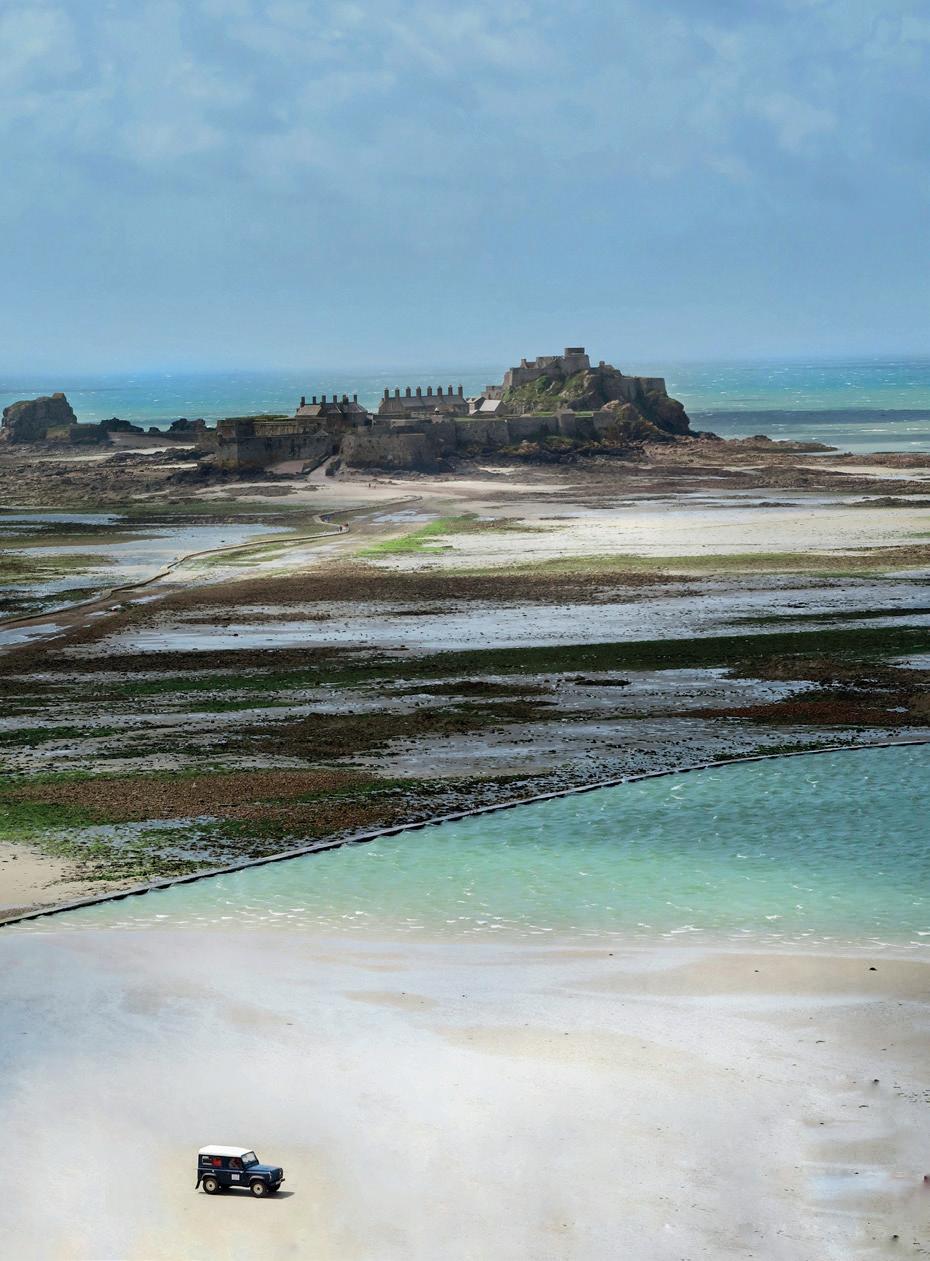

Mark De Jong at Unsplash

In this episode of the TIPs podcast we travel to Jersey, the curiously Brit...(ish) island in the English Channel. It’s a place that’s familiar, but with a delightfully continental twist, and it’s a place where you’ll quickly and easily feel on holiday. The largest of the channel Islands, Jersey is also the sunniest spot in the British Isles and is
close to the UK mainland. Once on the island, you’re never more than 10 minutes from the beach – be it golden sandy bays in the south or sheltered coves in the north and east.
But Jersey isn’t just about its coastline, so joining the podcast to talk about everything this island offers is Kary Day, a Blue Badge tour guide, and Sarah Barton from Visit Jersey.
Join us as we travel to the town of Enniskillen and Loch Erne in County Fermanagh, Northern Ireland. An hour and a half’s drive west from Belfast, Loch Erne is the second largest lake system in Northern Ireland, rich in history, wildlife and outdoor activities. Among the 150-plus islands of Upper and Lower Loch Erne, we find Barry Flanagan, owner of Erne Water Taxis. Based
LISTEN



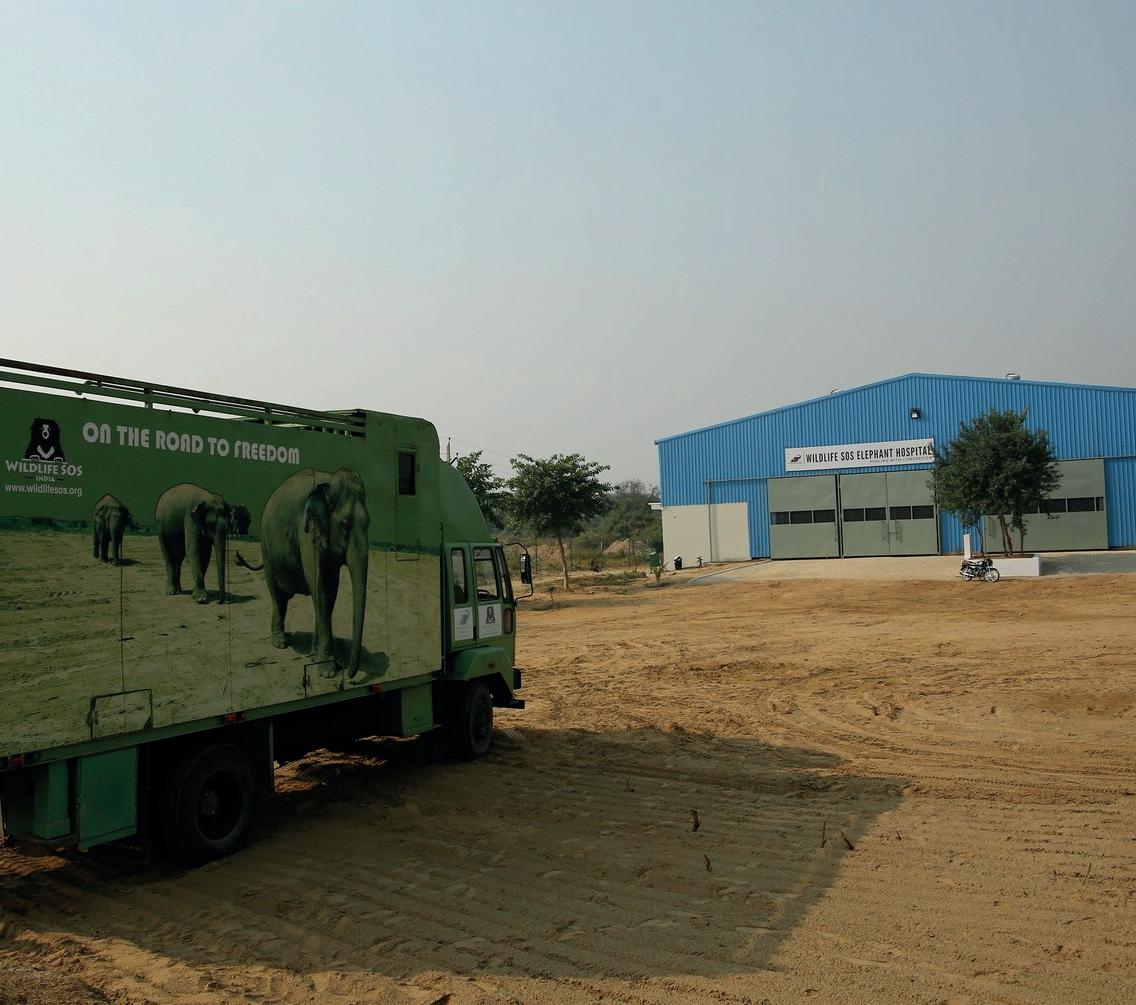
Find
Last November, Wildlife SOS celebrated the fifth anniversary of the inauguration of its Elephant Hospital in the state of Uttar Pradesh in India. A pioneering facility in the realm of elephant welfare, five years on the hospital stands strong on its unwavering commitment made towards healing elephants found in distress. With a skilled team of professionals and advanced apparatus, the Wildlife SOS Elephant Hospital has redefined the standards of elephant care globally.
Holly was the first elephant to receive medical care at the Elephant Hospital. A blind and injured begging elephant with septic wounds all over her body, when the team found her she was in
great discomfort and suffering with osteoarthritis, as well as walking on thinning footpads. The Wildlife SOS veterinarians used laser therapy to soothe her pain, combined with hydrotherapy in the hospital’s hydraulic pool, to accelerate her healing.
Since Holly, nearly 20 elephants have been rescued and treated with the Elephant Hospital’s state-of-theart amenities. The facility sits in 50 acres and has a digital weighing scale for accurate health assessments, diagnostic equipment such as thermal imaging and ultrasonic massagers, and an in-house pathology lab so the team can detect diseases at an early stage.
The hospital is designed to impart specialised care to geriatric elephants,
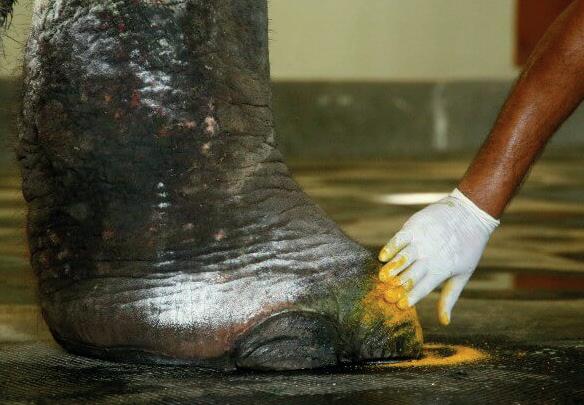
as the majority of its patients have spent a lifetime walking on concrete and tarmac roads as begging elephants, temple elephants or as riders in the tourism industry.
The staff don’t just focus on the physical healing however, they also acknowledge the emotional intelligence of elephants and provide structural and food-based enrichments, pool time, dust and mud baths, and daily walks to exercise these beautiful creatures’ bodies and refresh their minds.
Five years on, Wildlife SOS has created a path for the well-being of distressed elephants but, says the charity, there is still a long way to go to promote sensitive care to these majestic animals.

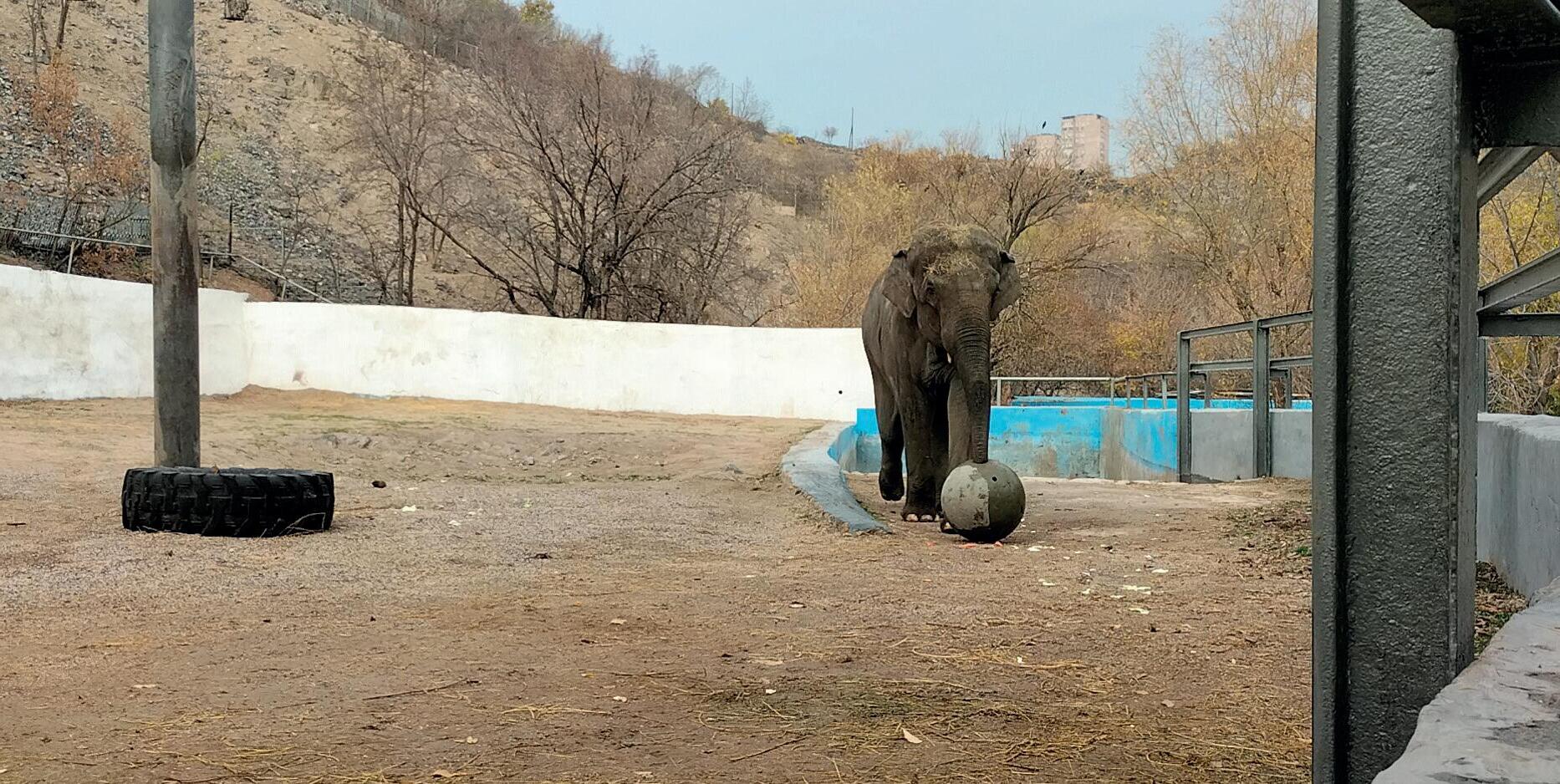
Appalled at the conditions Bunka, a lone bull elephant, is living in at Yerevan Zoo in Albania, travel writer Mark Stratton co-founded the Free Bunka campaign to try and secure his release and improve his well-being
My journey as co-founder of an elephant welfare campaign called Free Bunka began when working in Armenia in the depths of winter 2021. It was around -12ºC when I had a free day and took myself to Yerevan Zoo. I dislike zoos, yet had heard from the organisation, Born Free, about a lone bull elephant at the zoo. I decided to visit him to check his condition. His name is Bunka.
Upon reaching the zoo, an ugly facility housing some of its animals in heartbreakingly cramped cages, I headed to Bunka’s small, stimulationfree concrete enclosure. There was thick snow on the ground, and Bunka ambled out of a depressingly dark barn, where in winter he spends 16 hours each day locked inside, shuffling around in circles. He listlessly trudged over to me bearing a haunted hollow-eyed look and just stared with bloodshot eyes.
He’d been moved to Yerevan Zoo aged six in 2014; taken from his mother in another miserable zoo in Georgia and is now in his 10th year of solitary captivity. Keeping elephants in solitary captivity even contravenes the appallingly low zoo industry standards they have for these sentient creatures. To the contrary, modern science suggests
for their mental wellbeing elephants need huge territories and the ability to forage for their own food. They do not flourish in any form of captivity and are subject to illness and premature death.

I had to try to do something for him, thus with a fellow elephant supporter, launched Friends of Bunka in early 2022. Our aim is to free Bunka from Yerevan Zoo and secure for him a better life in one of a growing number of elephant sanctuaries. We also raise awareness of the plight of endangered Asian elephants. As few as 50,000 of them remain, with over 50% of those existing in grim captivity, in zoos, circuses, or riding camps.
We started the campaign by launching a change.org petition calling for his release. To date, we have garnered support of 85,000 signatures globally. We quickly negotiated with a sanctuary in Cambodia (where Bunka’s bloodline likely comes from) to take him in after securing his release. After months of negotiation Yerevan Zoo agreed to an independent inspection of him, funded by us and
carried out by three renowned experts. The report, published in of February 2023, found Bunka suffering both physical deprivation and psychological stress. He was noted to have a malnourished frame and exhibit a repetitive stress behaviour called stereotyping.
To date, the zoo is ignoring all recommendations. The evidence has been placed in front of them, yet they choose not to act. Meanwhile, Bunka continues to suffer. We are currently planning a new push to raise better awareness inside Armenia of his plight. We cannot stop on this journey to free him and raise awareness of how captivity represents outright animal abuse of this intelligent, gentle species. Typically, captive male elephants live short lives –on average, just 15 years. This year Bunka will be 17. His time may be limited so we must keep donating our time to free him before it’s too late.
Sister Bernadeth is one of the Sisters of Mary at Kisarawe Girlstown, near Dar es Salaam in Tanzania. She is a ‘Mother-Sister’ to a group of girls at the school. Sr Bernadeth is involved in every aspect of the programme, from community visits and meeting children in need to the day-to-day caring of the children in her family at school

My day to day life is very busy, with every day spent working and helping the girls entrusted to our care. Each day I start with a prayer with my fellow Sisters then after I proceed to the children (we call them our children because we stand as a mother, we call ourselves ‘mother-sister’) to help and serve them. We prepare together their food for every meal, eat with them, do some house chores with them and prepare them for classes by providing everything they need. After classes I do some activities with the girls, like sports, gardening or music. In the evening I supervise the girls in their personal and group studies.
Our programme helps the poor and the needy. Here in Tanzania, we have 924 students and we give them a high-quality education with technical and vocational courses, and also help to form the children holistically with the help of God and our beloved donors. We give them education, shelter, clothing, medicine and services for free.
Our humanitarian education programme is needed in Tanzania to improve the way of living, especially for the poor. Poor children deserve help so that they can discover their abilities, talents and reach their dreams. They can realise how valuable and precious the gift of life is, and grow, develop and be successful so that they can also help their family and their society.
The programme at this time of year is continuously growing and

improving and the students are more focused on their studies. We Sisters are almost done in the process of meeting new children for the next school year. Before the new girls arrive, we need to prepare all their needs for education, such as books, bags, notebooks and other school supplies, and also we need to prepare their personal needs. We receive many applicants from the different regions of the country where we have travelled, and the teachers and workers are also showing their support and help with this programme.
The best thing for me is to be able to help the girls in their day-to-day life. By making the most of the opportunities they have here in school, we teach them to live life to the fullest.
World Villages for Children and the Sisters of Mary run live-in schools providing free, quality education for the world’s poorest charitable.travel/children. world-villages-for-children

As a mother-sister, the biggest challenge that I am facing is the Swahili language, because I recently arrived from the Philippines. So now I am in the process of learning, but I am also grateful because the children here are trying to learn English and they are helping me to learn their language.


Devon and Cornwall Bushcraft CIC exists to help people access the outdoors and experience the health benefits of nature. Its director, Jono Holland, tells us more

WHAT IS DEVON AND CORNWALL BUSHCRAFT CIC?
We help young people get outdoors and into nature to benefit both their physical and mental health. We work with other charities, community groups and local councils to help people struggling with their mental health and/or drug and alcohol addiction to find some enjoyment from being outdoors.
WHERE DID THE IDEA COME FROM?
I’ve always done outdoorsy stuff and grew up in the country but it had always been a solo interest of mine. I was late to discovering Facebook and social media but once I did, I realised there was a massive community of people also interested in the outdoors, there just wasn’t much going on in the South West. So five years ago I set up a community Facebook group, initially running it in my spare time at weekends, and it’s quickly grown from there.
Once I started running courses to teach bushcraft skills, it really took off. With those, we target all ages, from children’s birthday parties to teambuilding exercises, but the day-to-day courses are adult-focused. We also
help teenagers work towards the John Muir Award, which encourages people to connect with, enjoy and care for wild places and actively learn, rather than just run around in the woods and build dens.
Yes, we run several short courses and also have a drop-in session every Wednesday evening, which is sort of like an adults’ Scouts session. So instead of going to the pub for a drink, you can come and sit around the fire with a warm drink. We also have oneoff sessions, so we had a Burns Night recently, and we’ve run Christmas decoration workshops and even built a coracle and floated down the river in it.
Getting people outside massively helps with their mental health. For example, with our team building days, I see so many people who sit at home behind their computers and haven’t met the other people in their team, so we get them outdoors, they can start to build relationships with each other, but they also develop themselves by learning new skills and building a connection

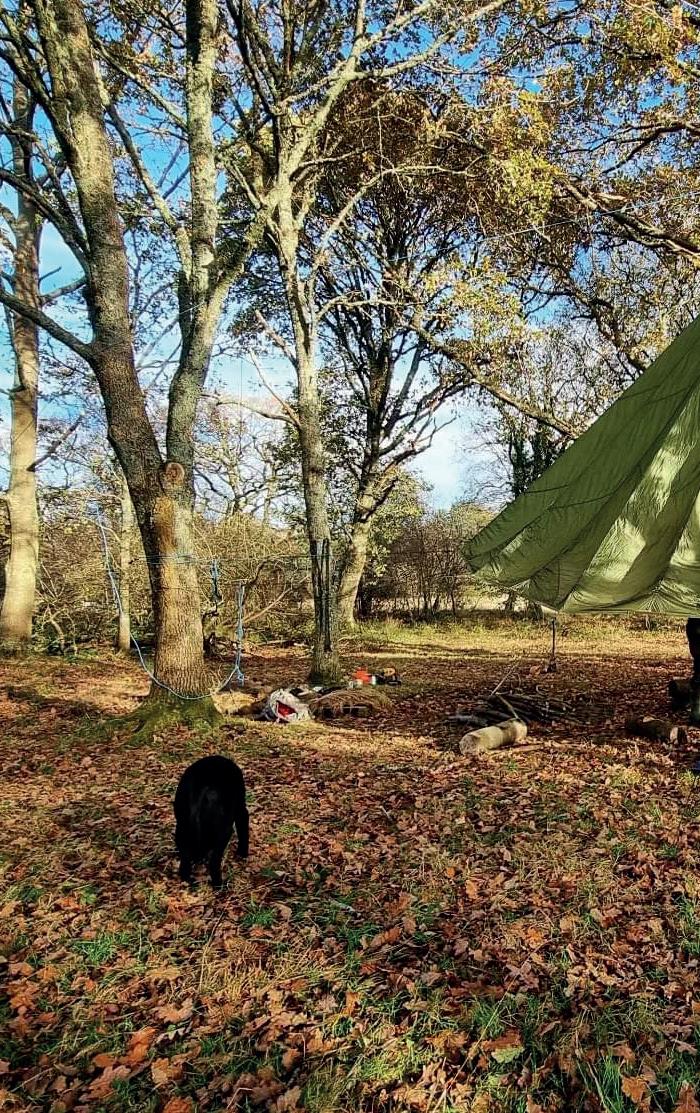

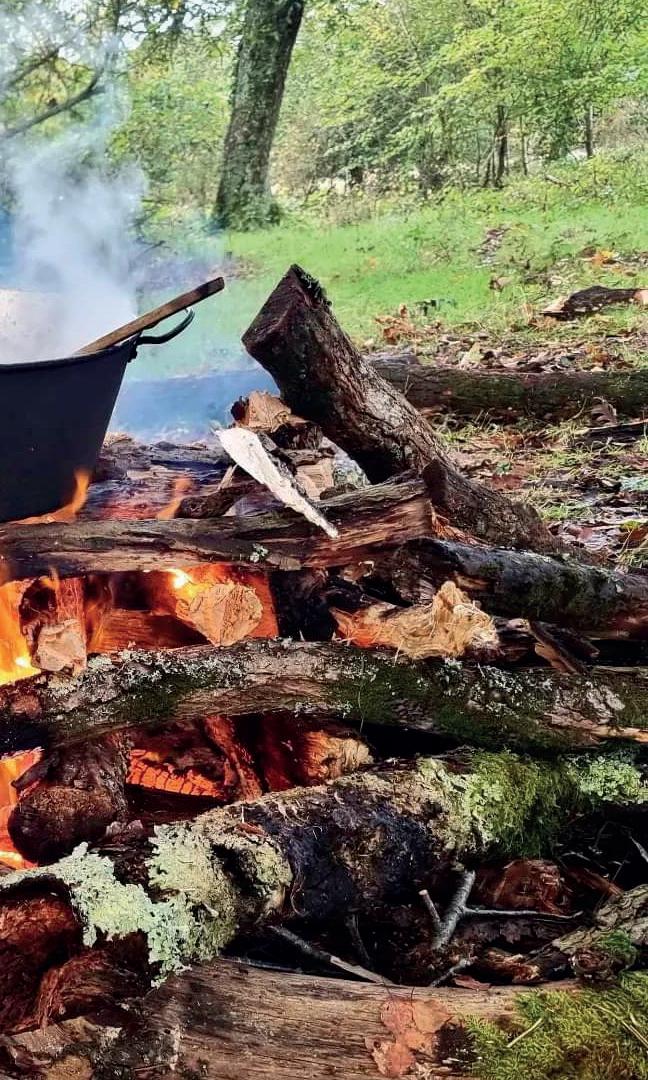

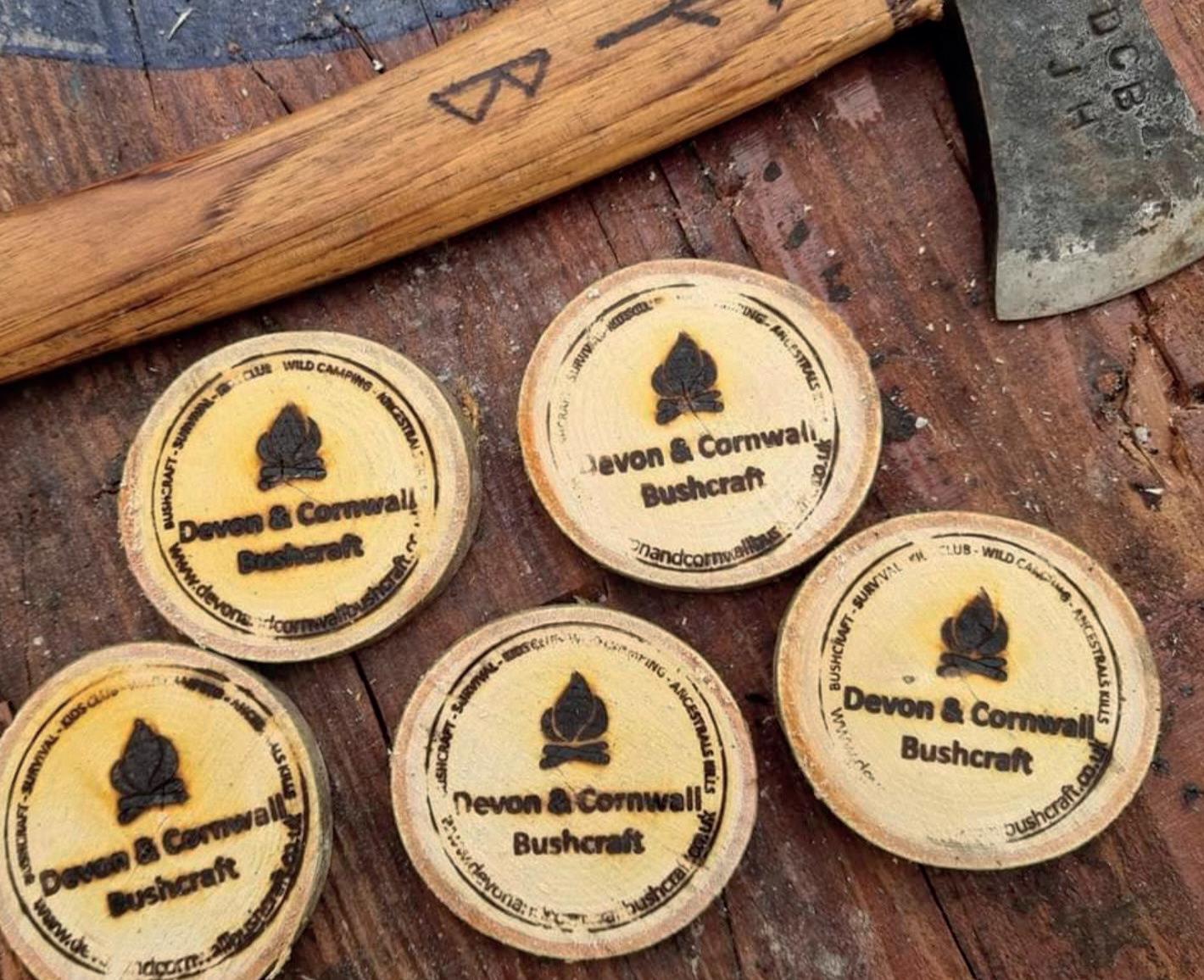
Get involved
Open to anyone who wants to embrace the great outdoors, develop survival skills and connect with nature, Devon and Cornwall Bushcraft CIC brings the benefits of wilderness, adventure and bushcraft to young and old.
devonandcornwallbushcraft.co.uk

with nature. I find that when people first join us they don’t want to get dirty and are uncomfortable around the bugs, but by the end of the day they’re filthy and completely chilled out.
WHERE ARE YOU BASED?
Our main area is two and half acres within the National Trust’s Parke Estate just outside Newton Abbot in Devon. We also have a few places in Cornwall, and a place we use on Exmoor.
hacking down trees and burning stuff where they shouldn’t be but instead learning more about the outdoors.
CAN YOU GIVE ME AN EXAMPLE OF HOW YOU’VE HELPED SOMEONE?
We get all sorts of people joining us, from office workers to the police and paramedics, and we give them the opportunity to experience things they wouldn’t otherwise have the chance to. From spending time with us, they’ve then noticed a general improvement in their wellbeing and had a significant impact on their lives.
It’d be great to develop ideas for secondary school age kids, so they’re not just hacking down trees and burning stuff where they shouldn’t be but instead learning more about the outdoors
IS THERE ANYTHING YOU’D LIKE TO SEE CHANGE IN YOUR AREA?
It’s great that forest schools are becoming a thing, they weren’t really around when I was younger, but there’s a gap missing when those children become teenagers. It’d be great to develop ideas for secondary school age kids, so they’re not just
WHAT’S THE BIGGEST CHALLENGE YOU FACE?
It’s actually getting people to join us outside. We’ve got a huge following on Facebook, which is fantastic, but encouraging those people to venture beyond their screen is hard. Look, for example, at the millions of people who subscribe to YouTube channels, but how often do they go out and do things? We even invite people to come along for free, but getting them out of their comfort zone and into the woods can be a challenge.
Accessible Arts & Media (AAM) has been running arts and creative media learning projects in and around York since 1982, working with disabled adults and young people, people living with dementia and memory loss, people with mental ill-health, and community groups. AAM believes that, with the right support, everyone can learn, be creative and play a part in their local community, so helps people develop the skills and confidence to connect with their community and have more of a say in the things that matter to them. And everyone has a lot of fun along the way!

100% SAID THAT TAKING PART IN AAM’S SESSIONS HAD MADE THEM FEEL HAPPY
AAM SUPPORTED 187 PEOPLE WITH REGULAR CREATIVE LEARNING AND WELLBEING ACTIVITIES AND DELIVERED 412 REGULAR ACTIVITY SESSIONS*
LONELINESS HAS A NEGATIVE IMPACT ON PHYSICAL HEALTH, MENTAL HEALTH AND THE ABILITY TO MAINTAIN INDEPENDENCE
AAM CREATED 1,082 HOURS OF PAID EMPLOYMENT OPPORTUNITIES FOR FREELANCE ARTISTS*
DISABLED PEOPLE, PEOPLE WITH MENTAL HEALTH PROBLEMS AND OLDER PEOPLE IN RESIDENTIAL CARE FACE A LACK OF SPECIALISED SUPPORT, A LACK OF TAILORED LEARNING AND FEW TAILORED SOCIAL ACTIVITIES
97%
SAID AAM HELPED THEM FEEL MORE CONFIDENT
Vulnerable people are more at risk of becoming lonely, cut off and invisible
604 PEOPLE ACCESSED AAM’S FREE LEARNING RESOURCES VIA AAM’S WEBSITE*
92%
SAID JOINING AAM HELPED THEM FEEL CONNECTED TO FRIENDS
89%
SAID TAKING PART IN AN AAM SESSION HAD HELPED THEM GET BETTER AT COMMUNICATING
Book a holiday with a difference with Charitable Travel
Whether you’re longing for a beach break to build amazing memories with your family, a romantic escape with your loved one, or want to don your backpack and venture back into the great unknown, our team of travel experts can help you plan and book the holiday you deserve.
Plus, when you book with Charitable Travel you can donate 5% of your holiday cost to a charity of your choice… completely free!




